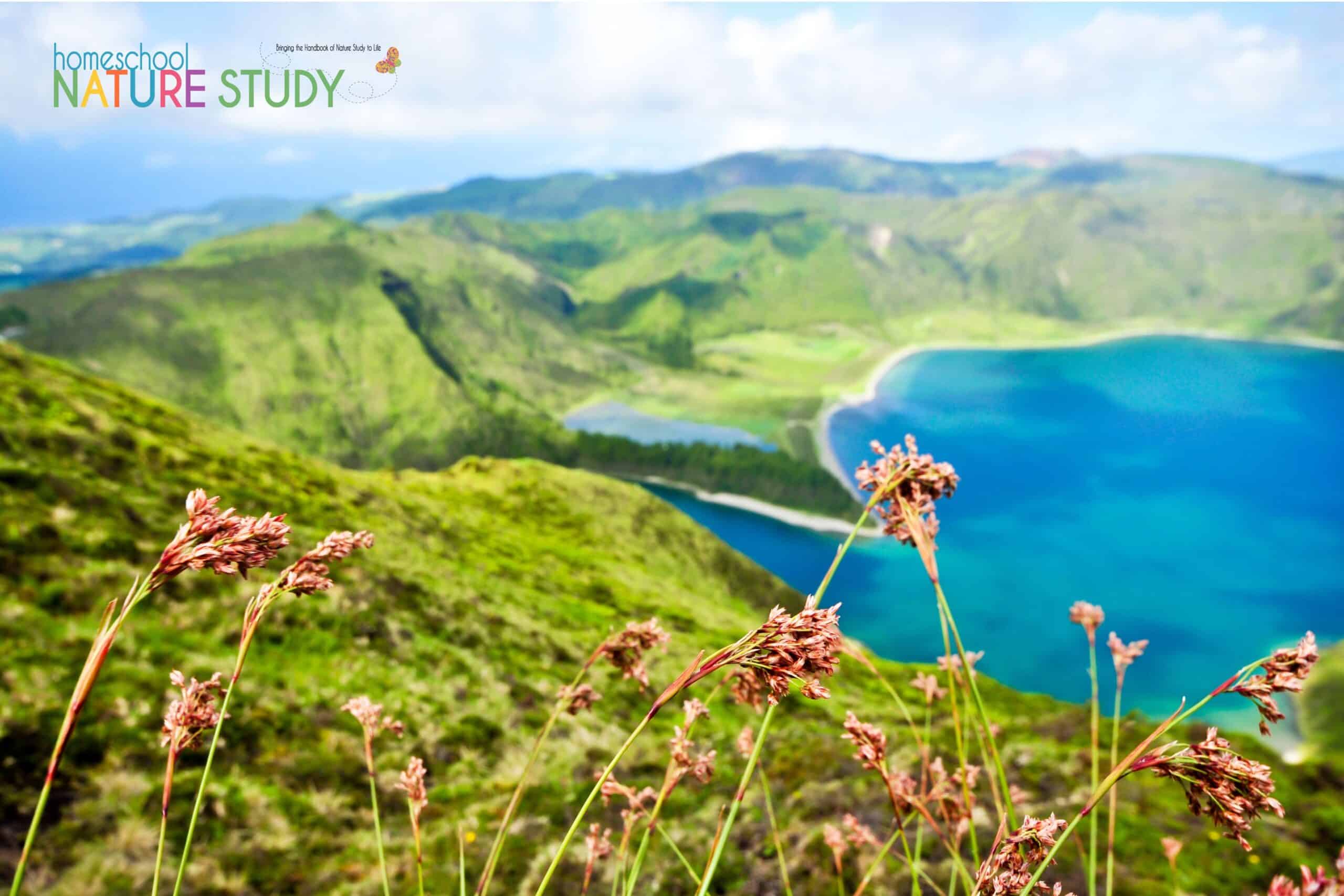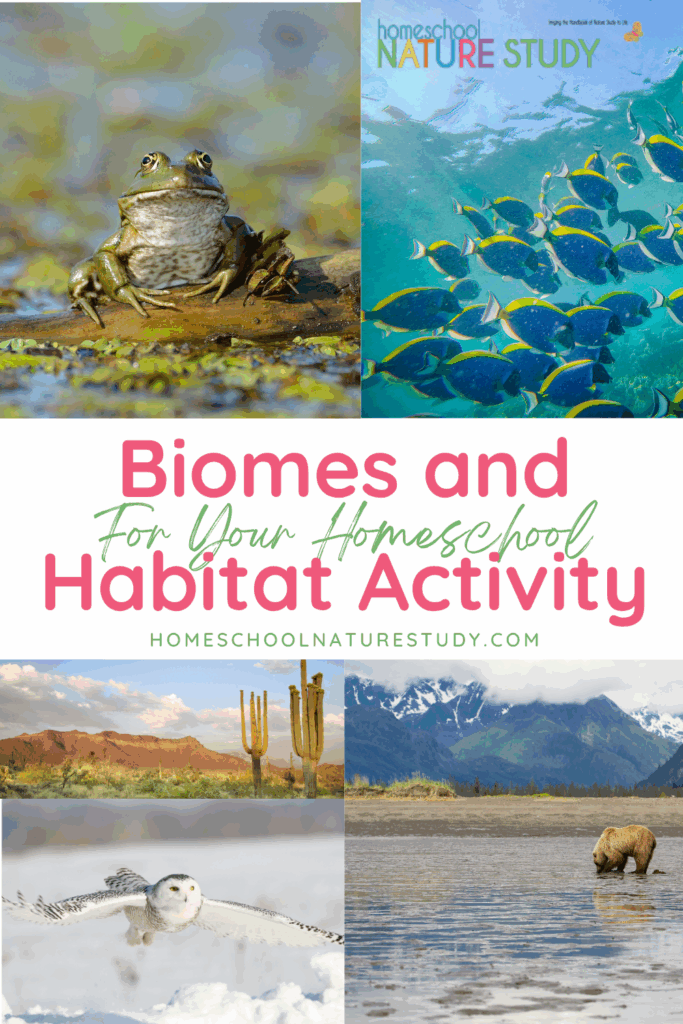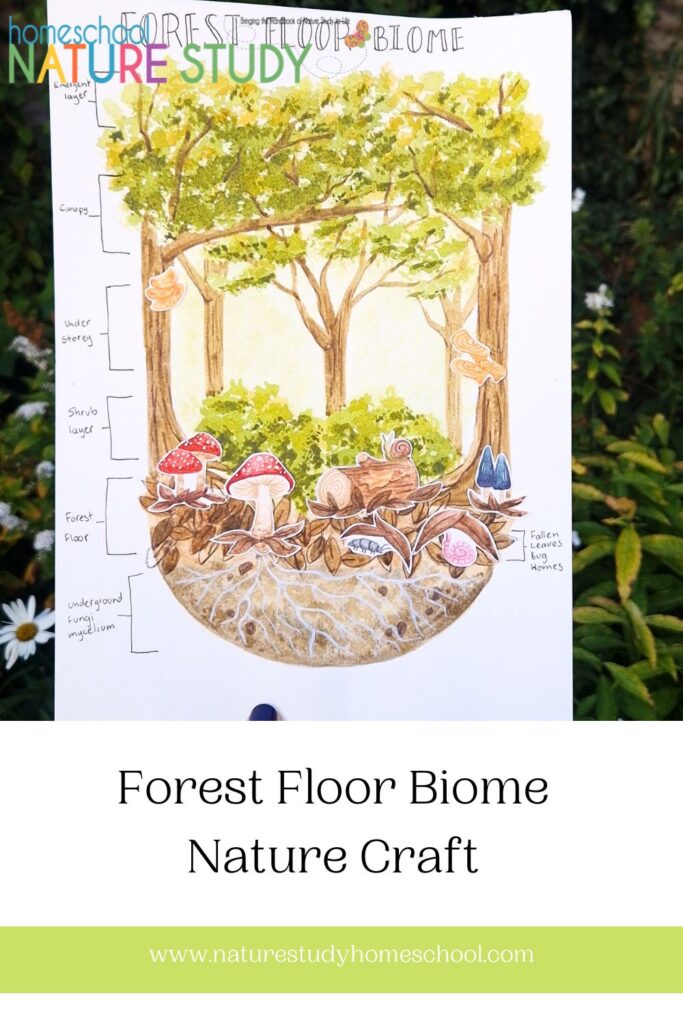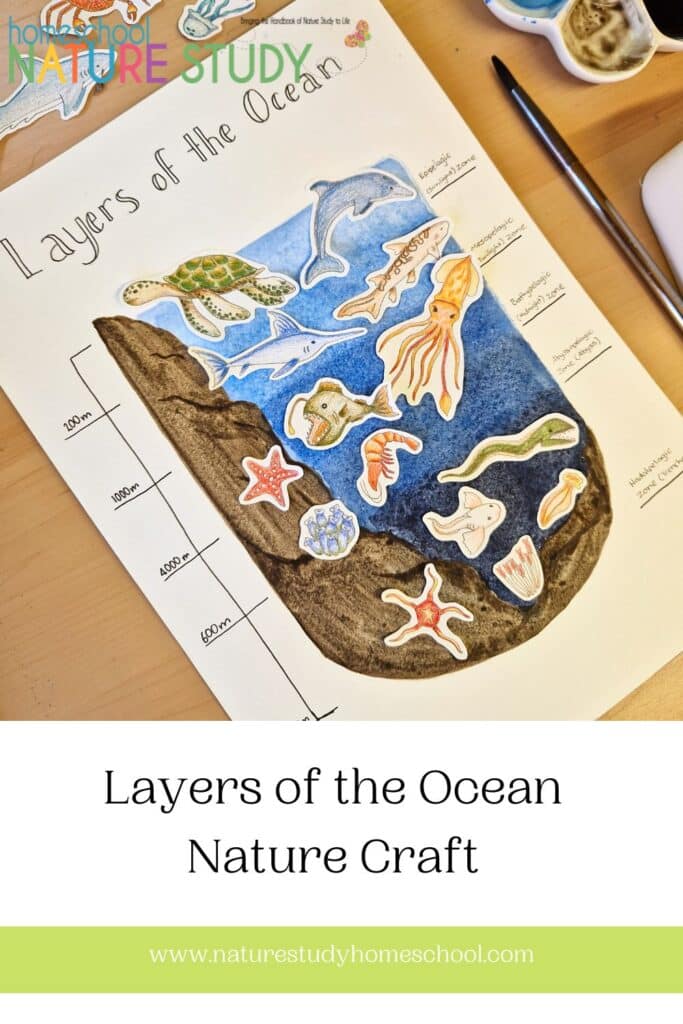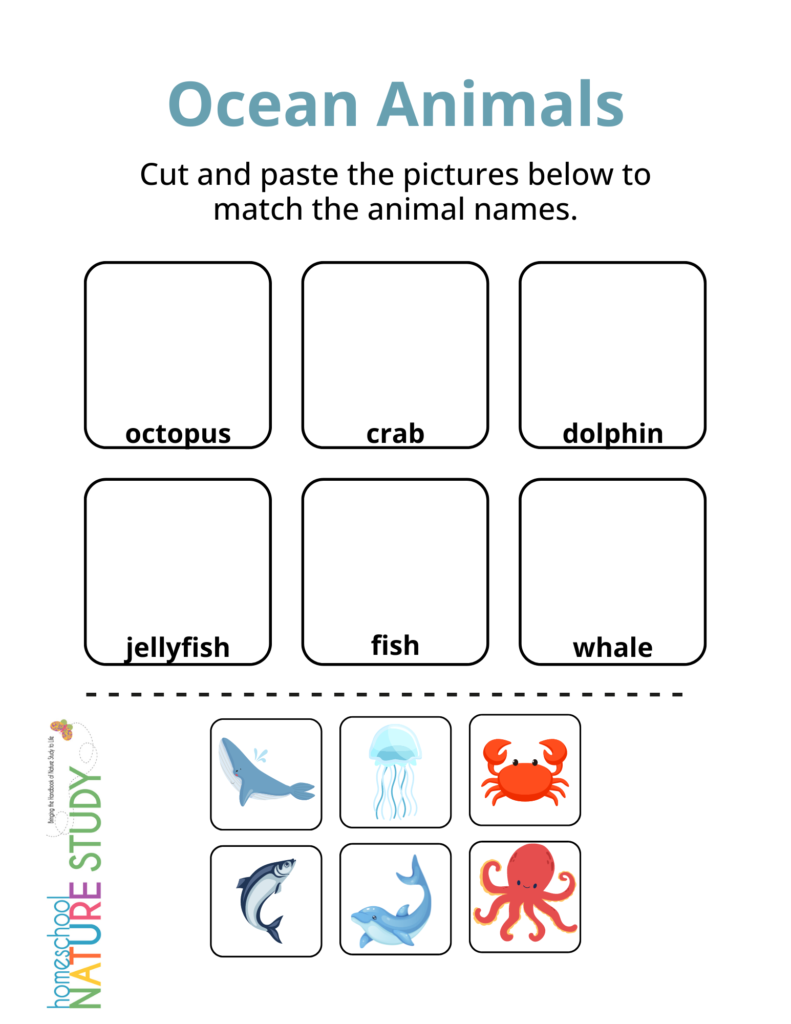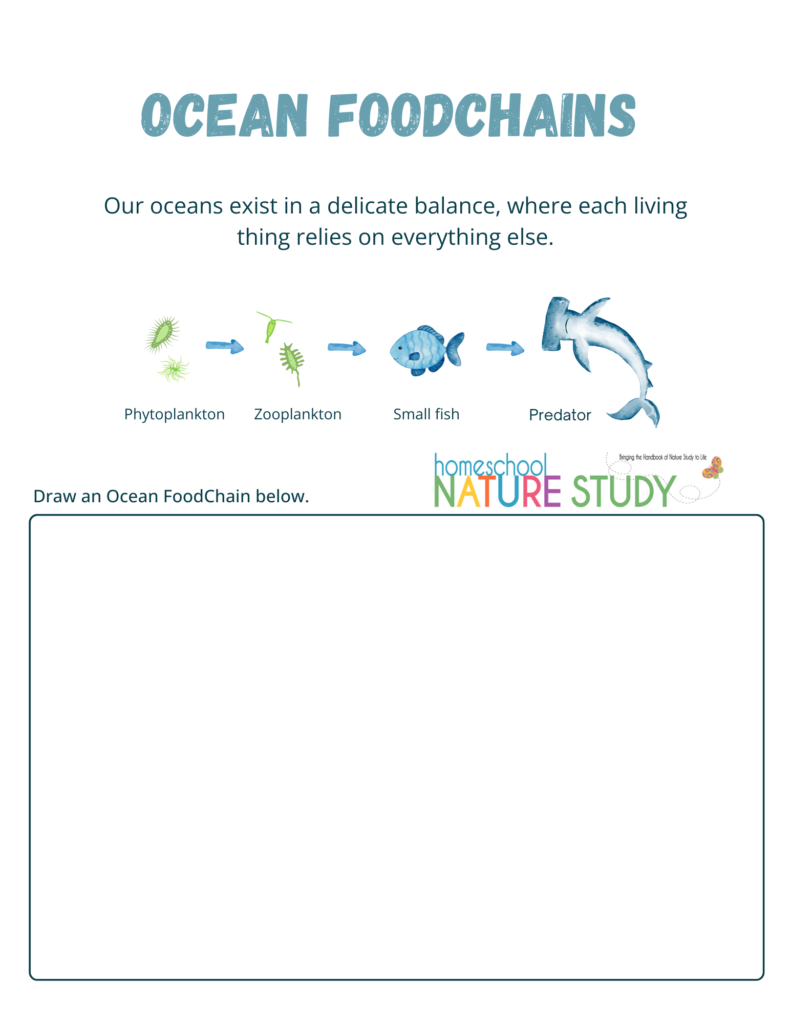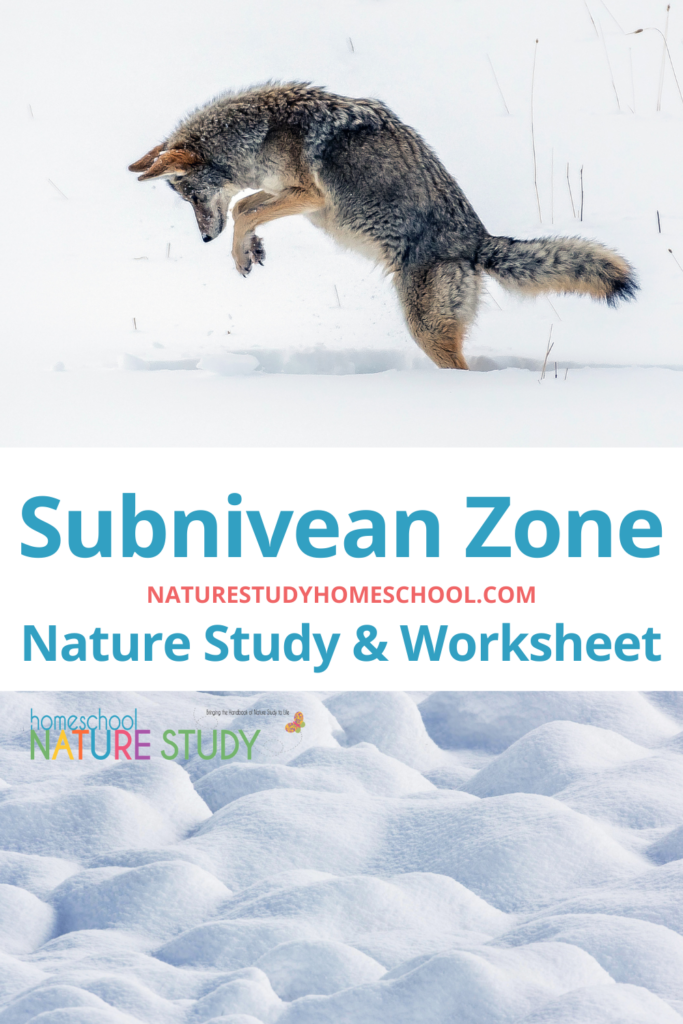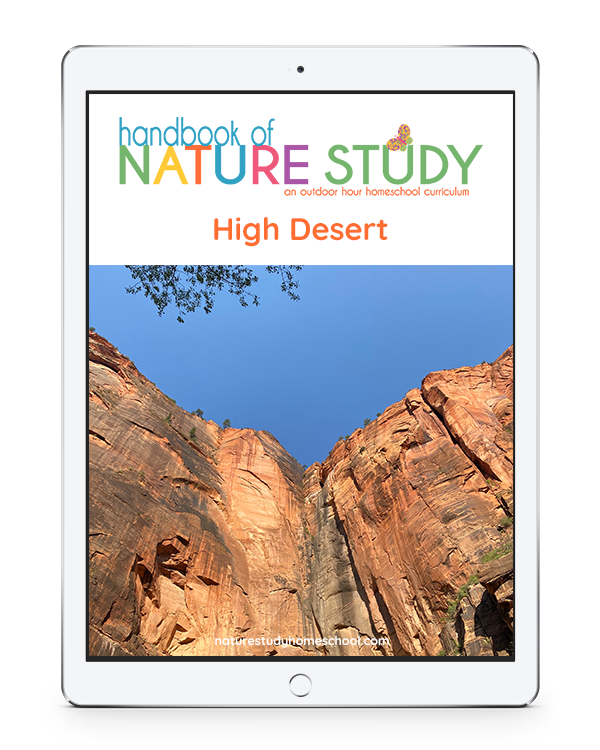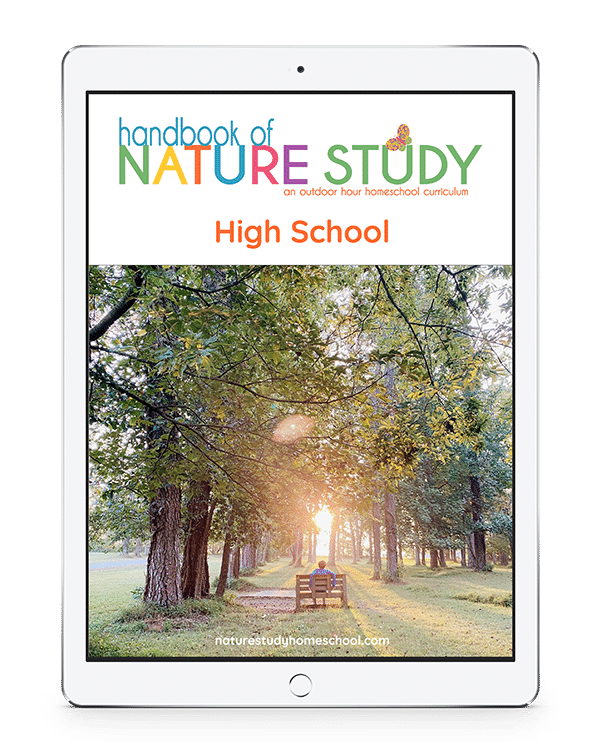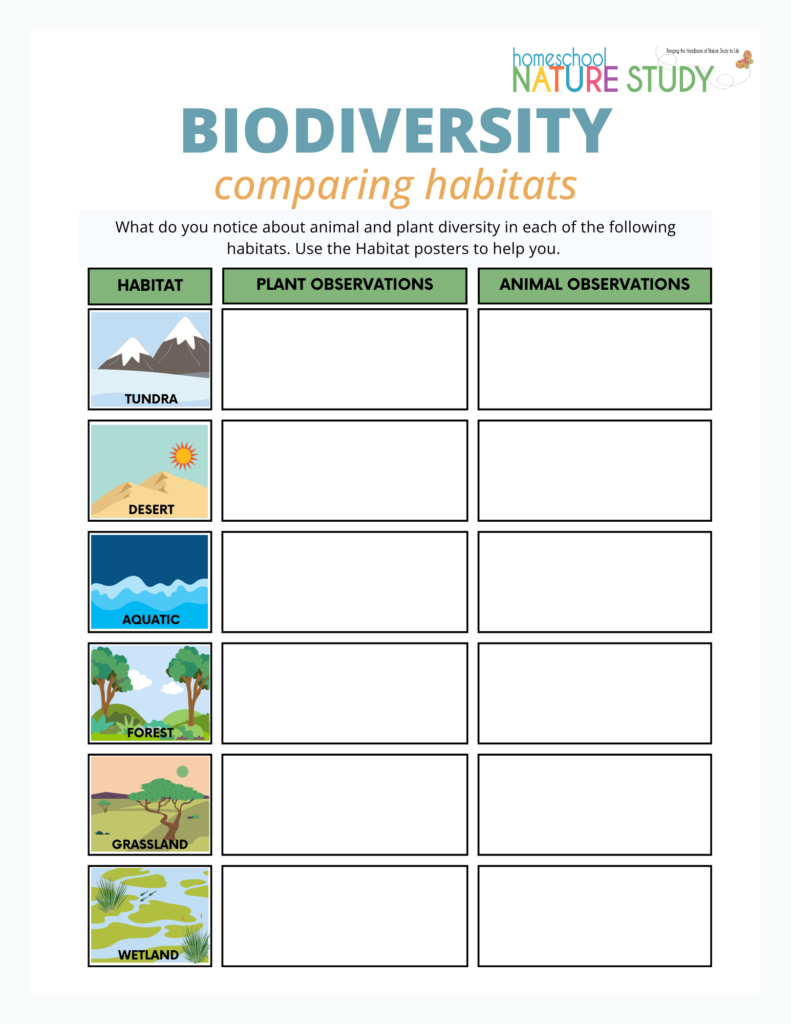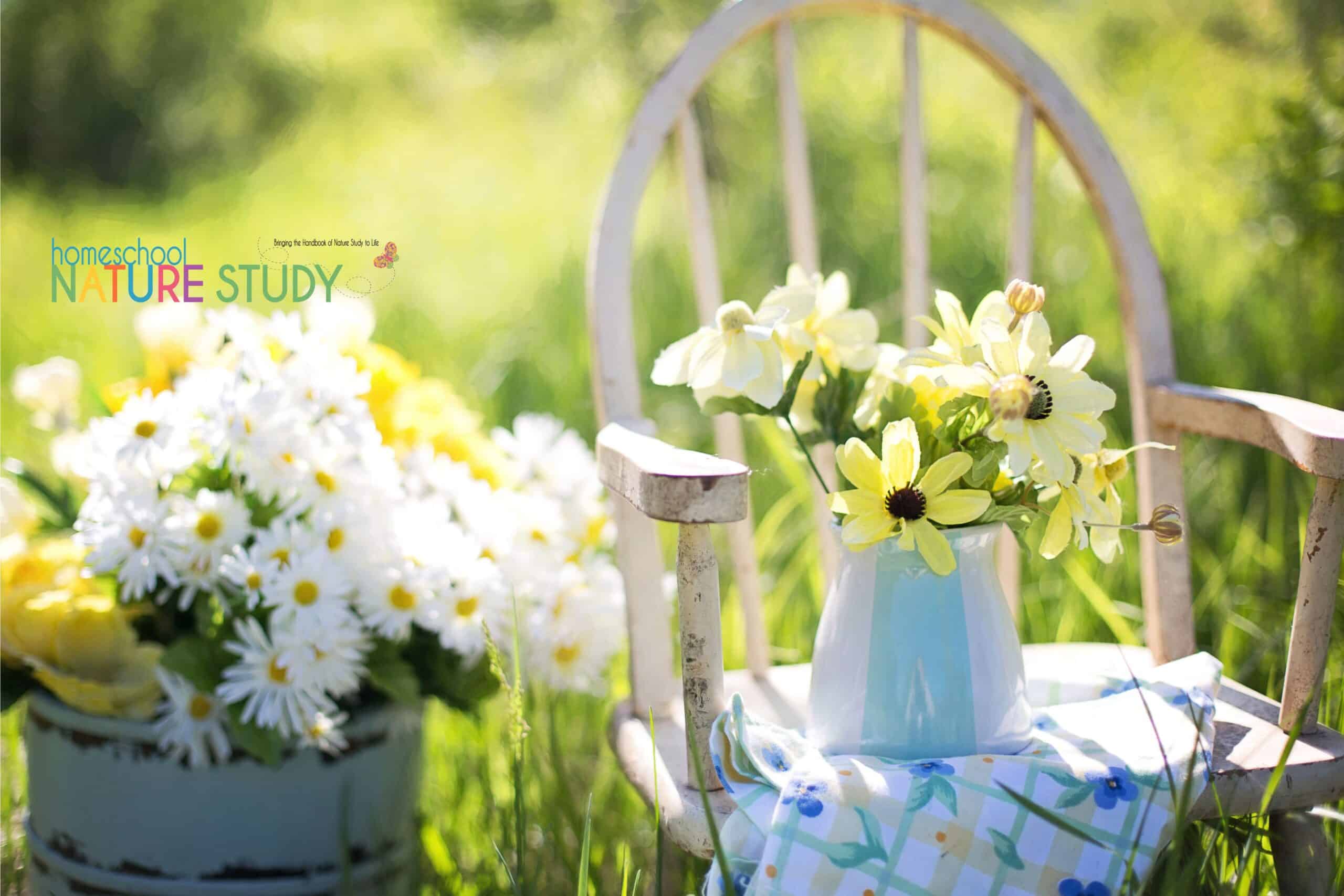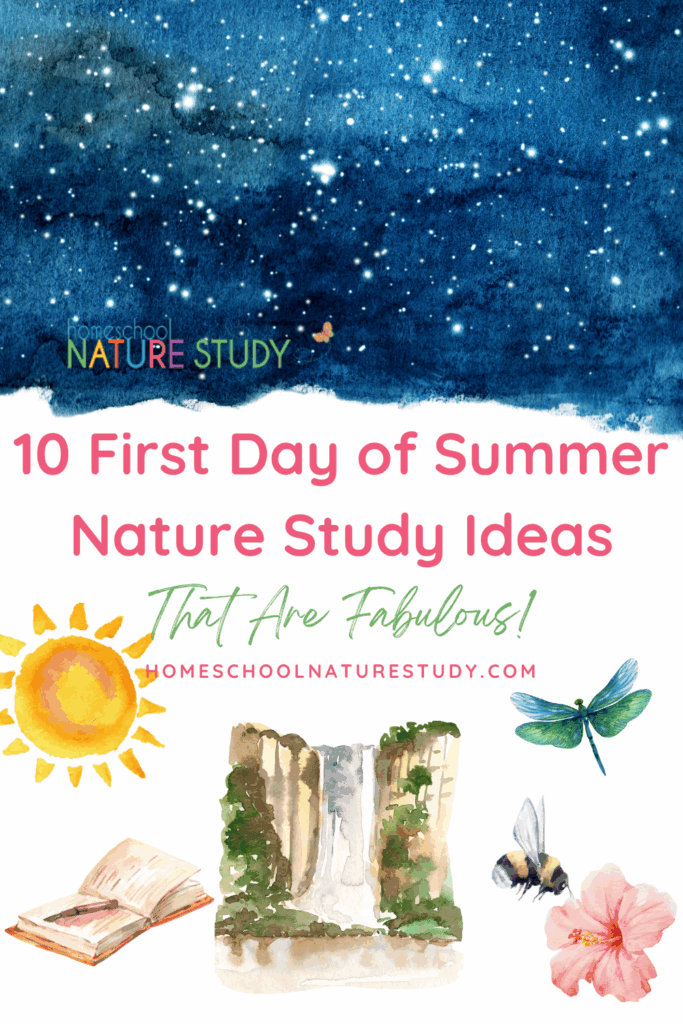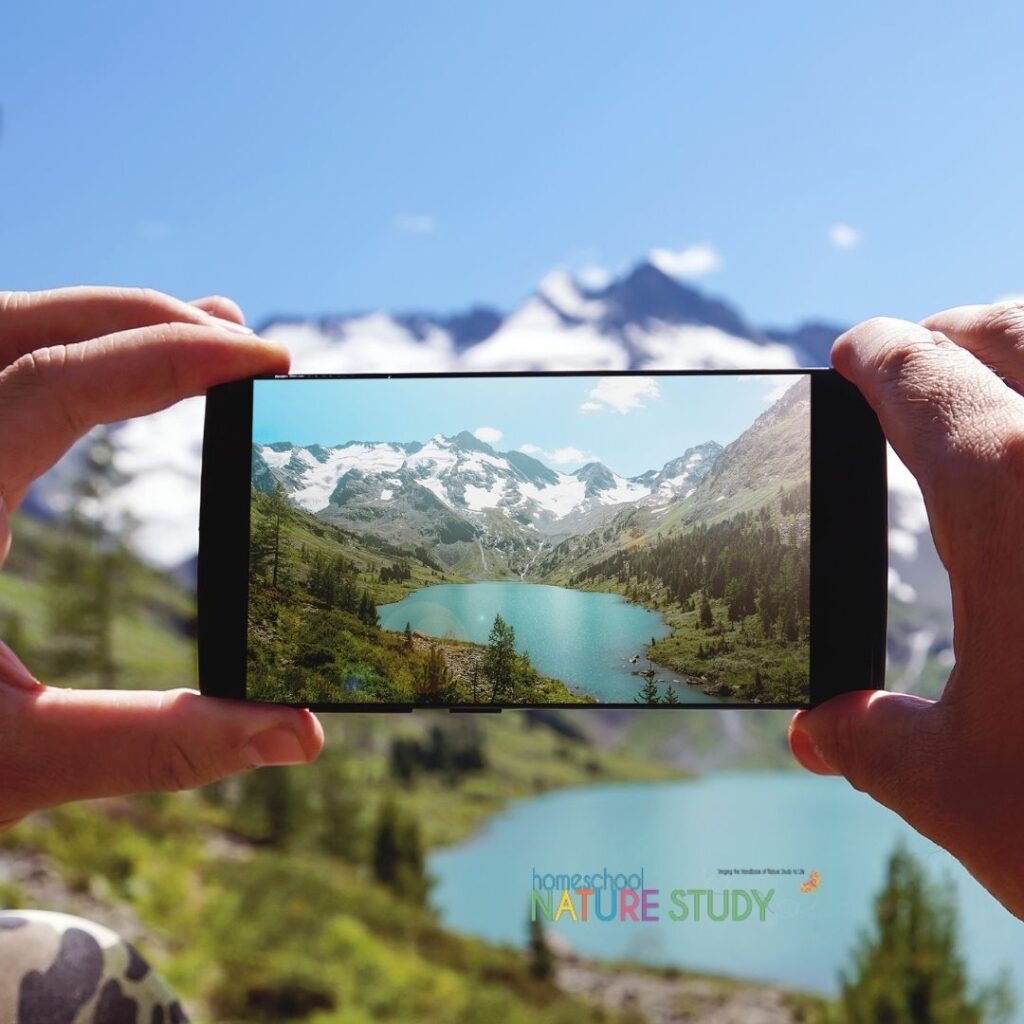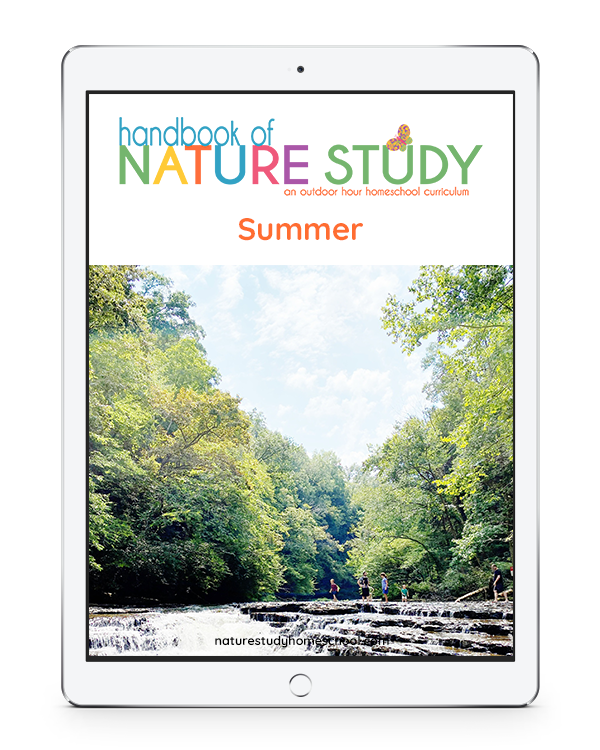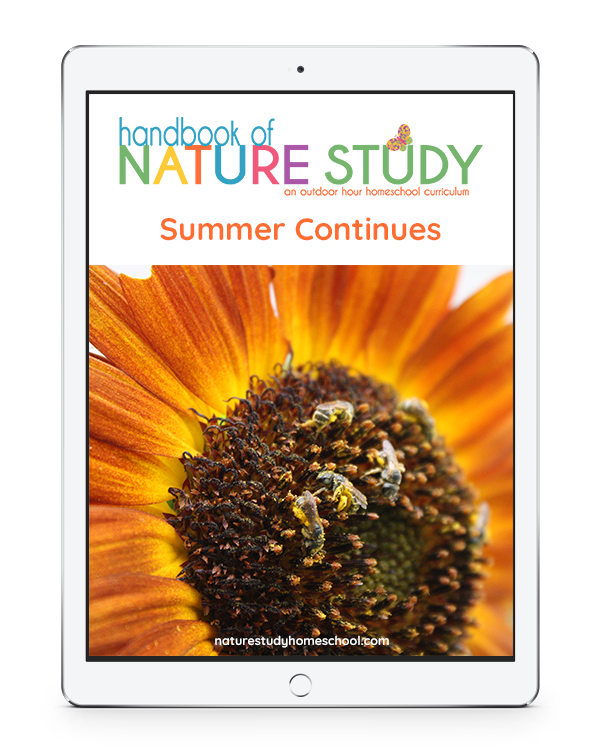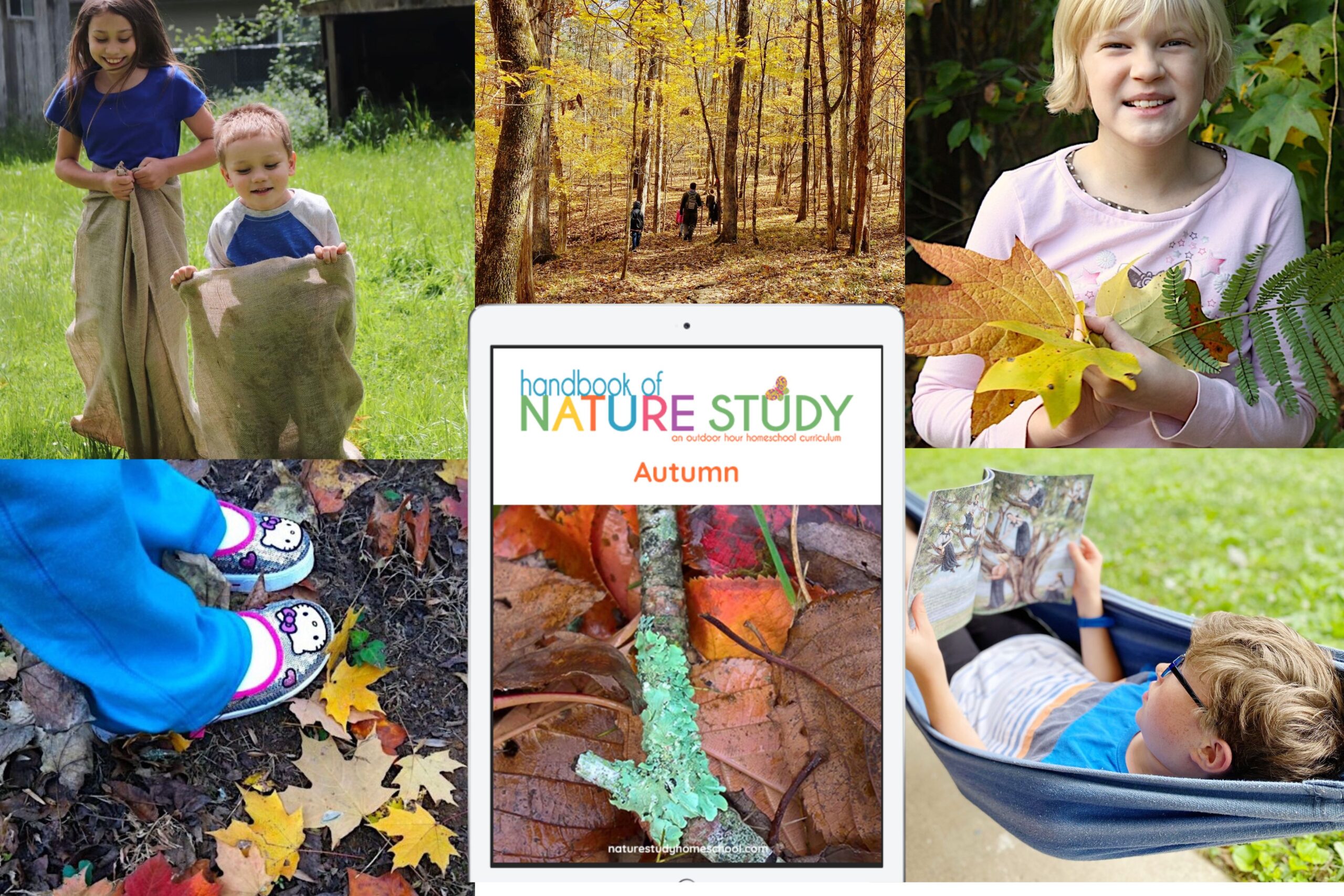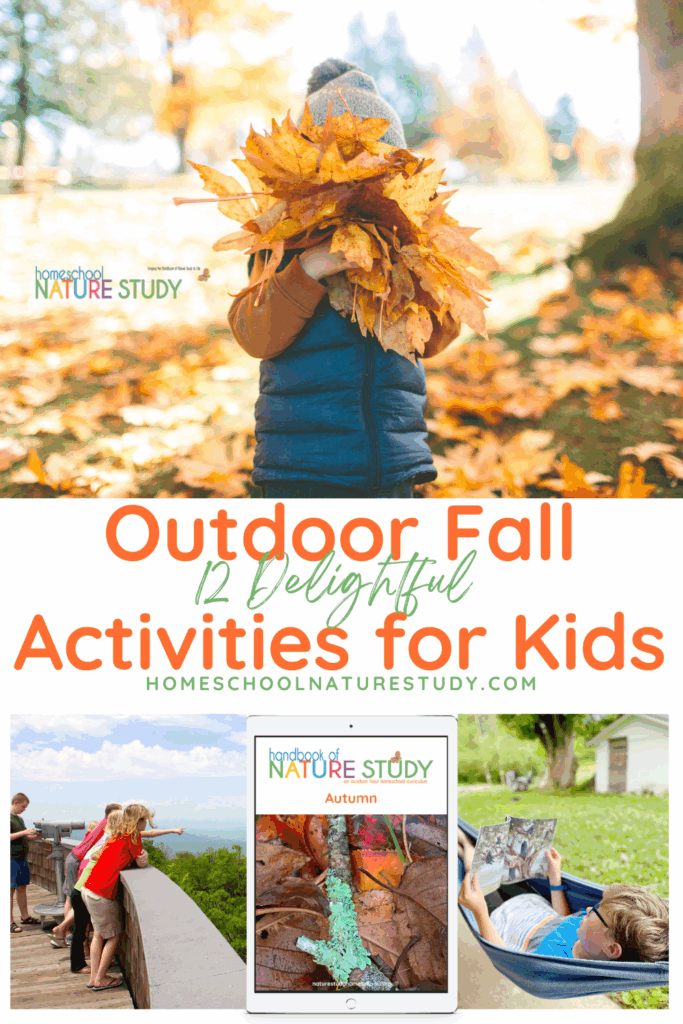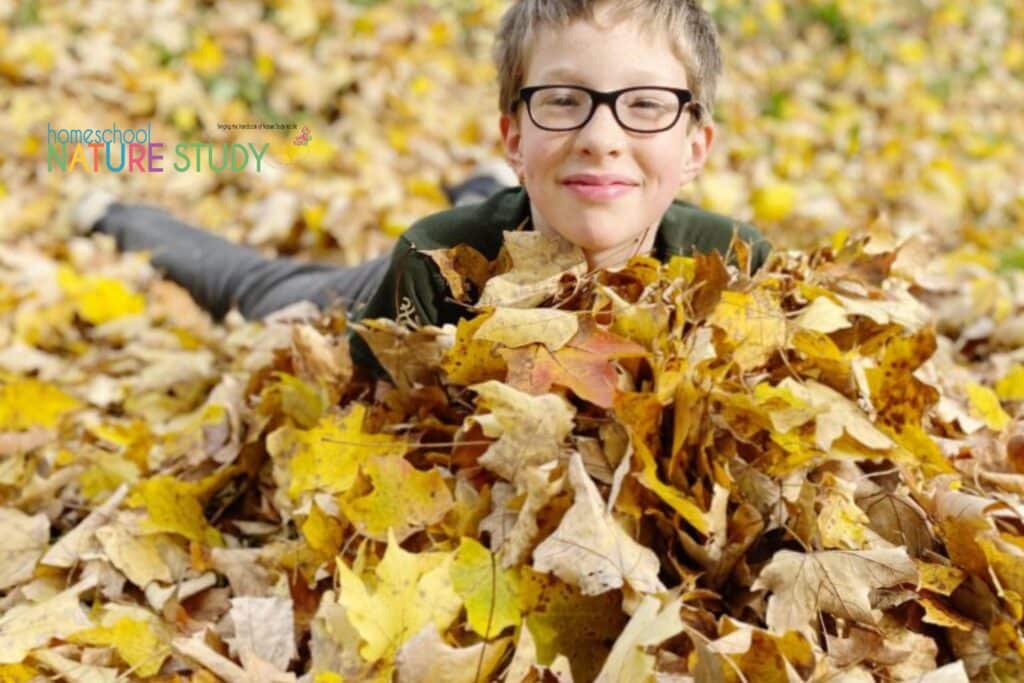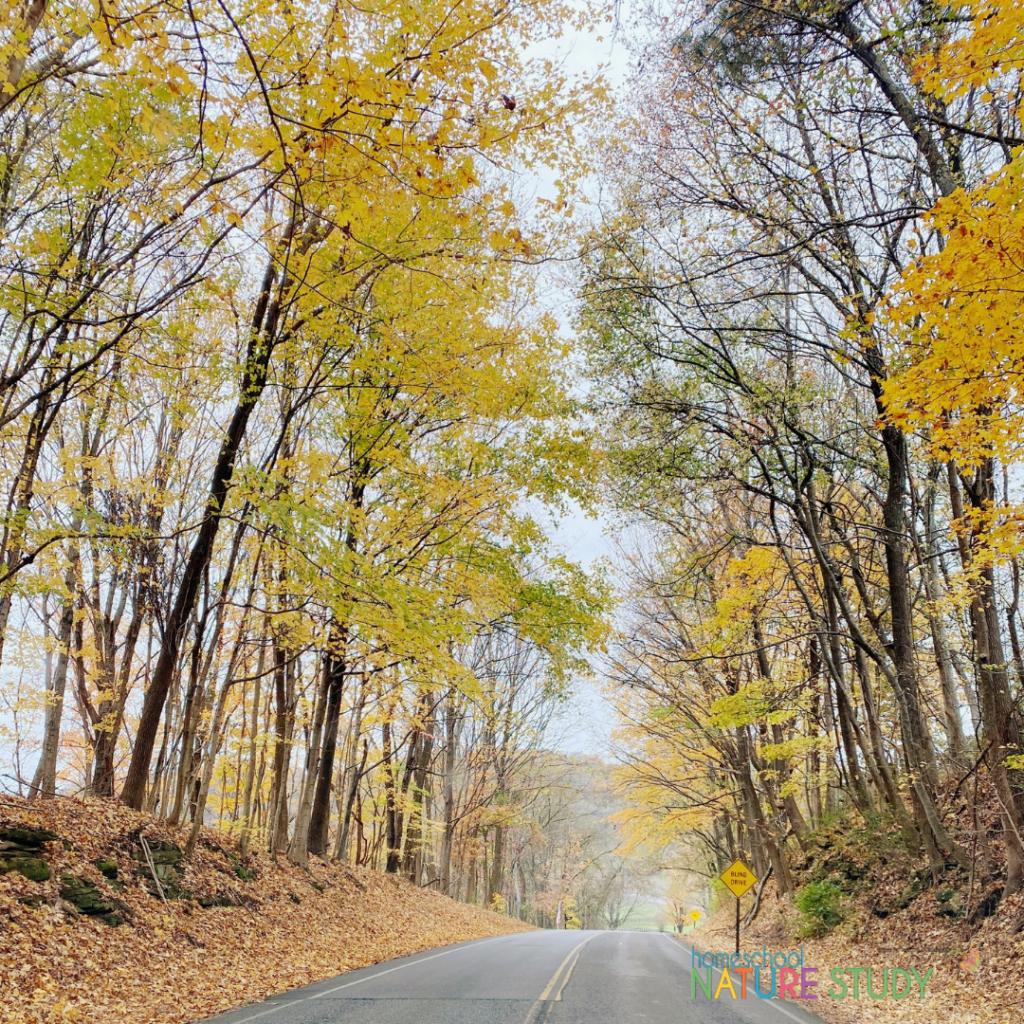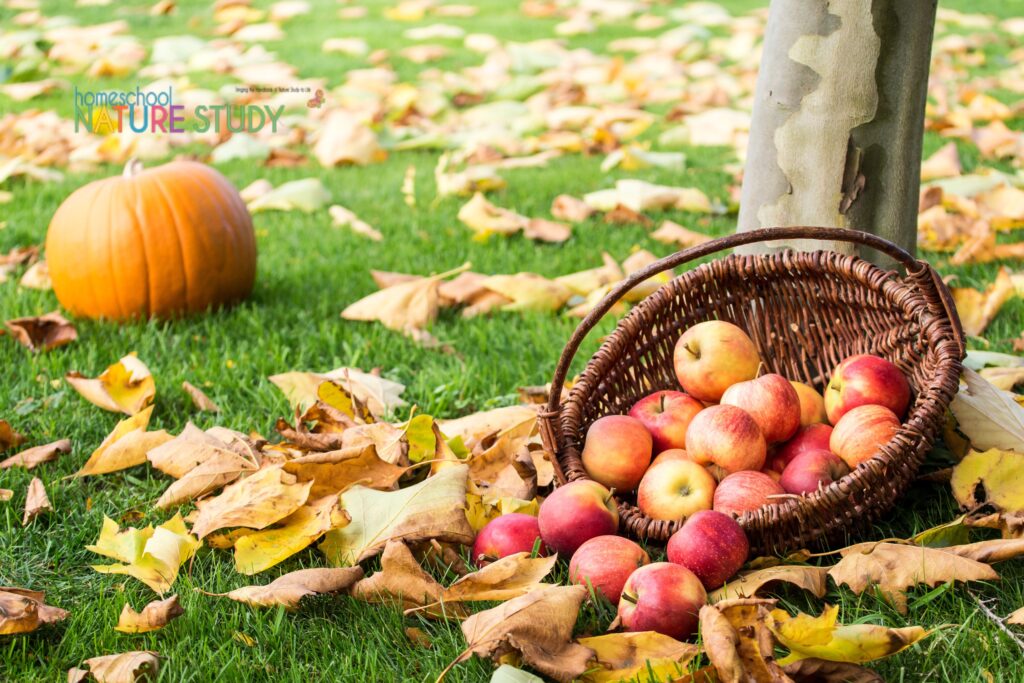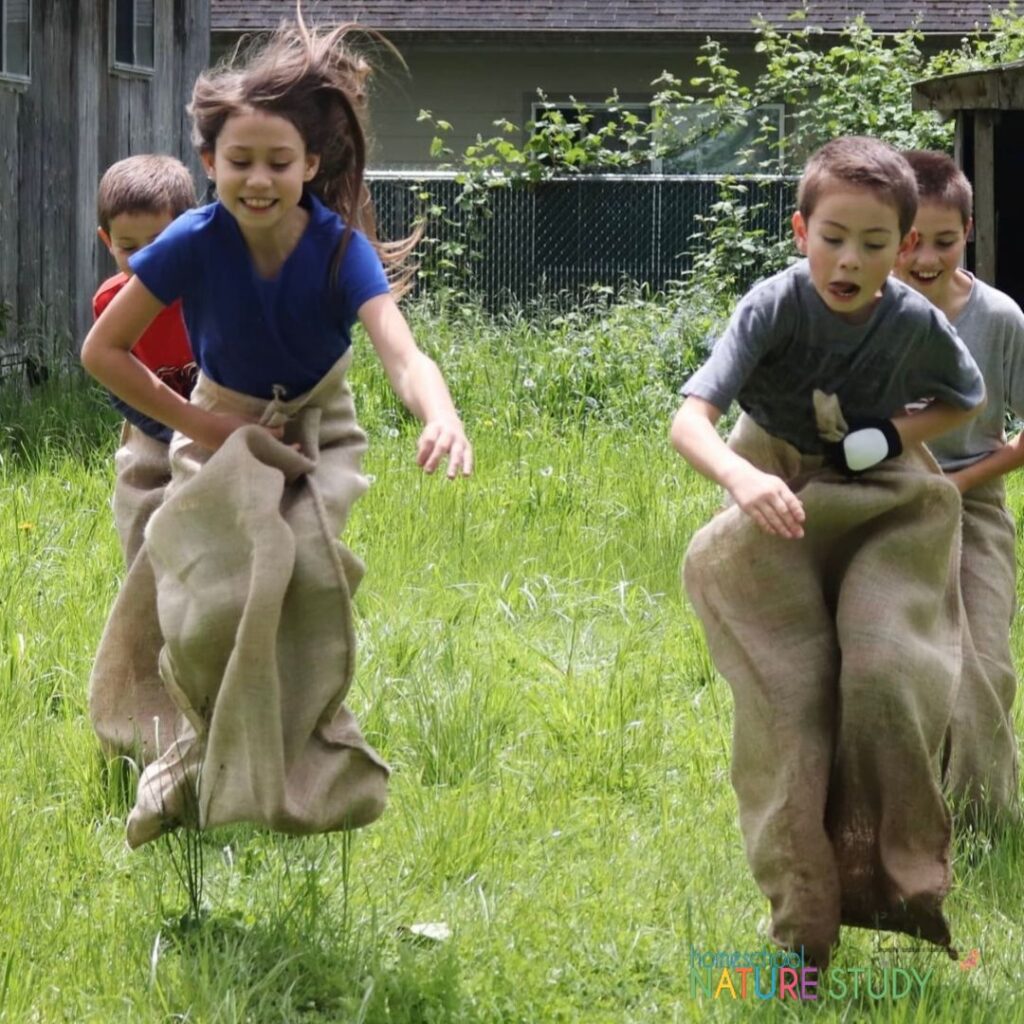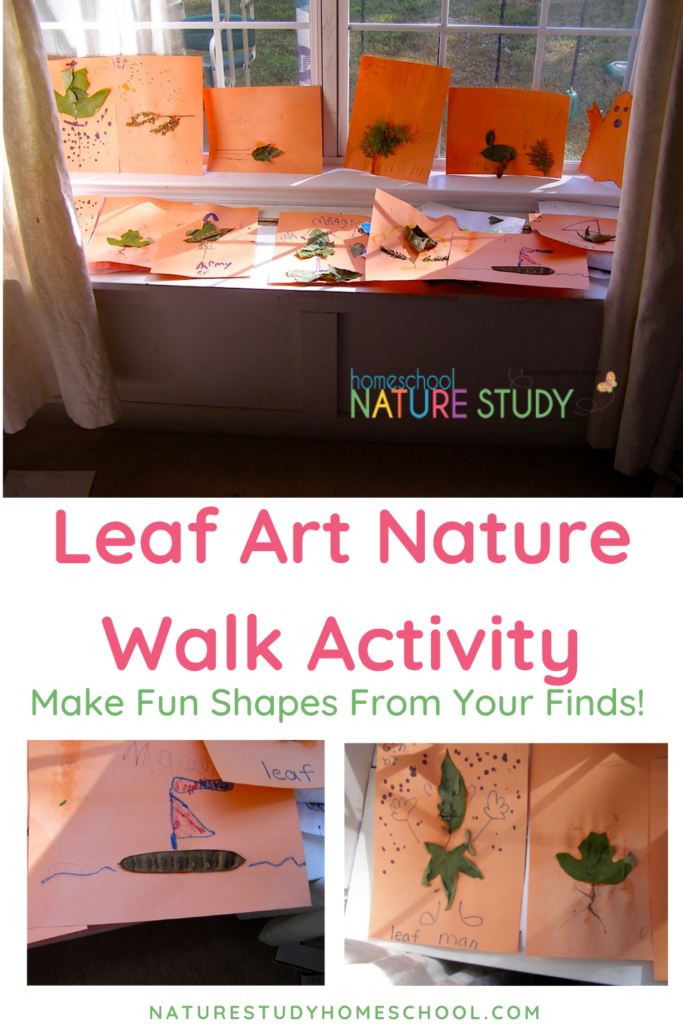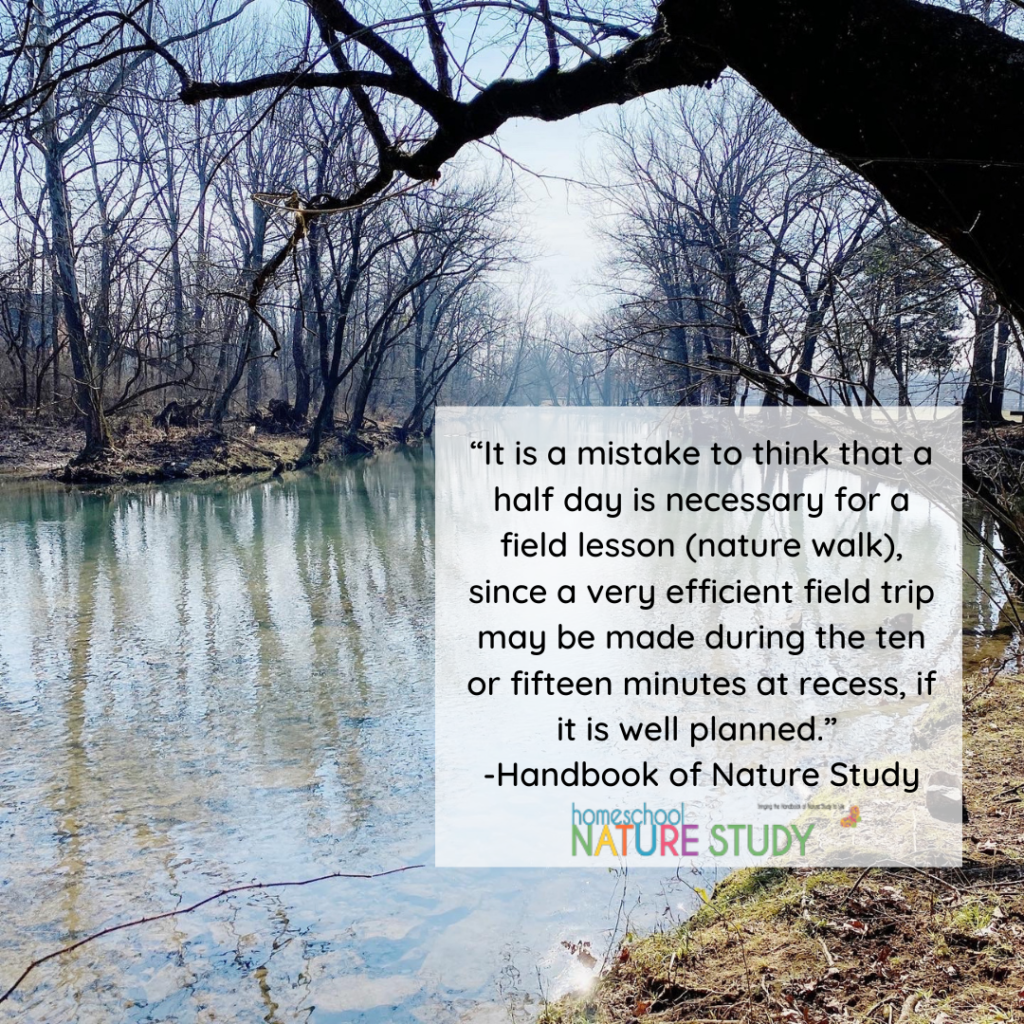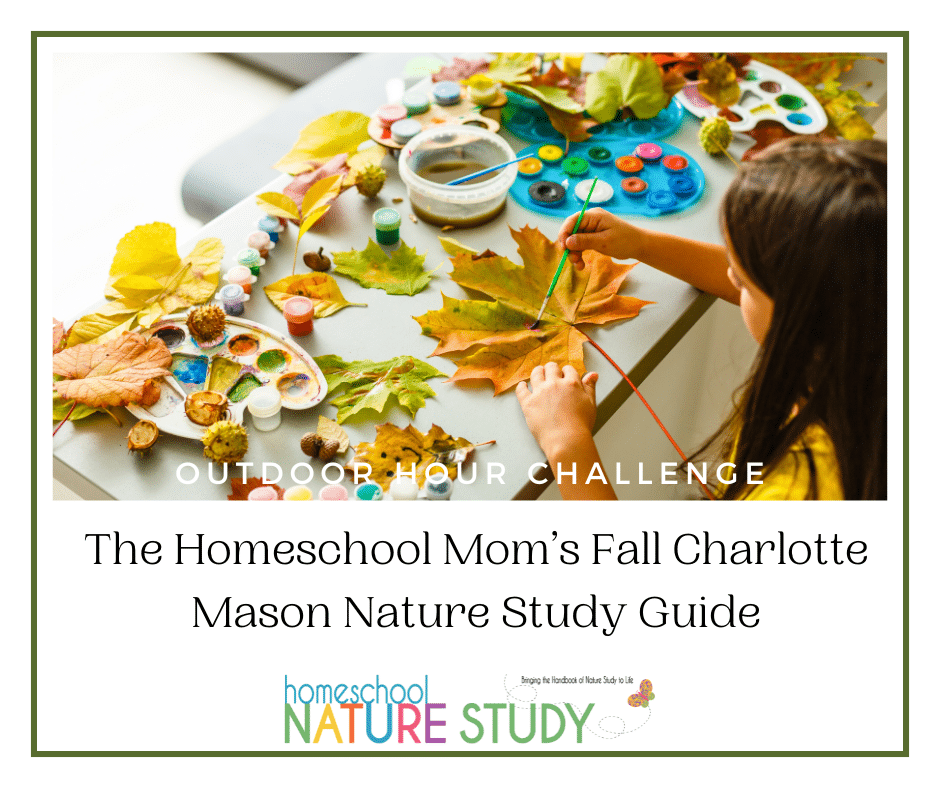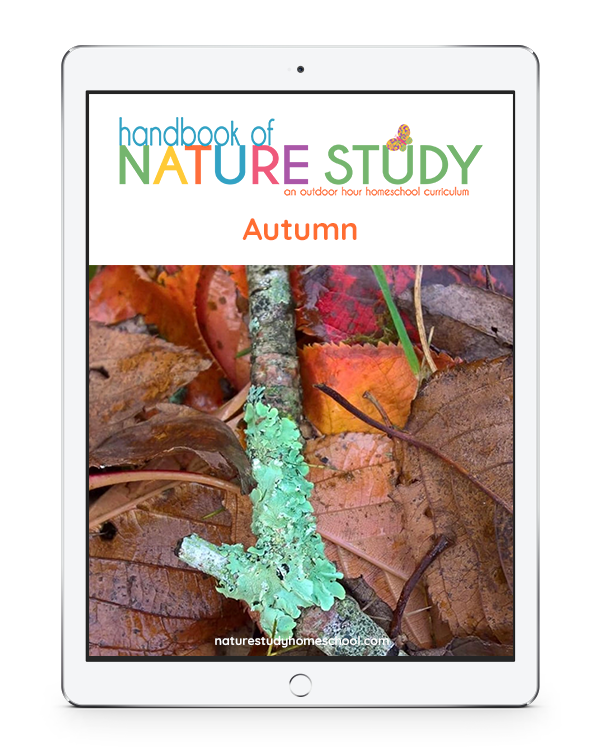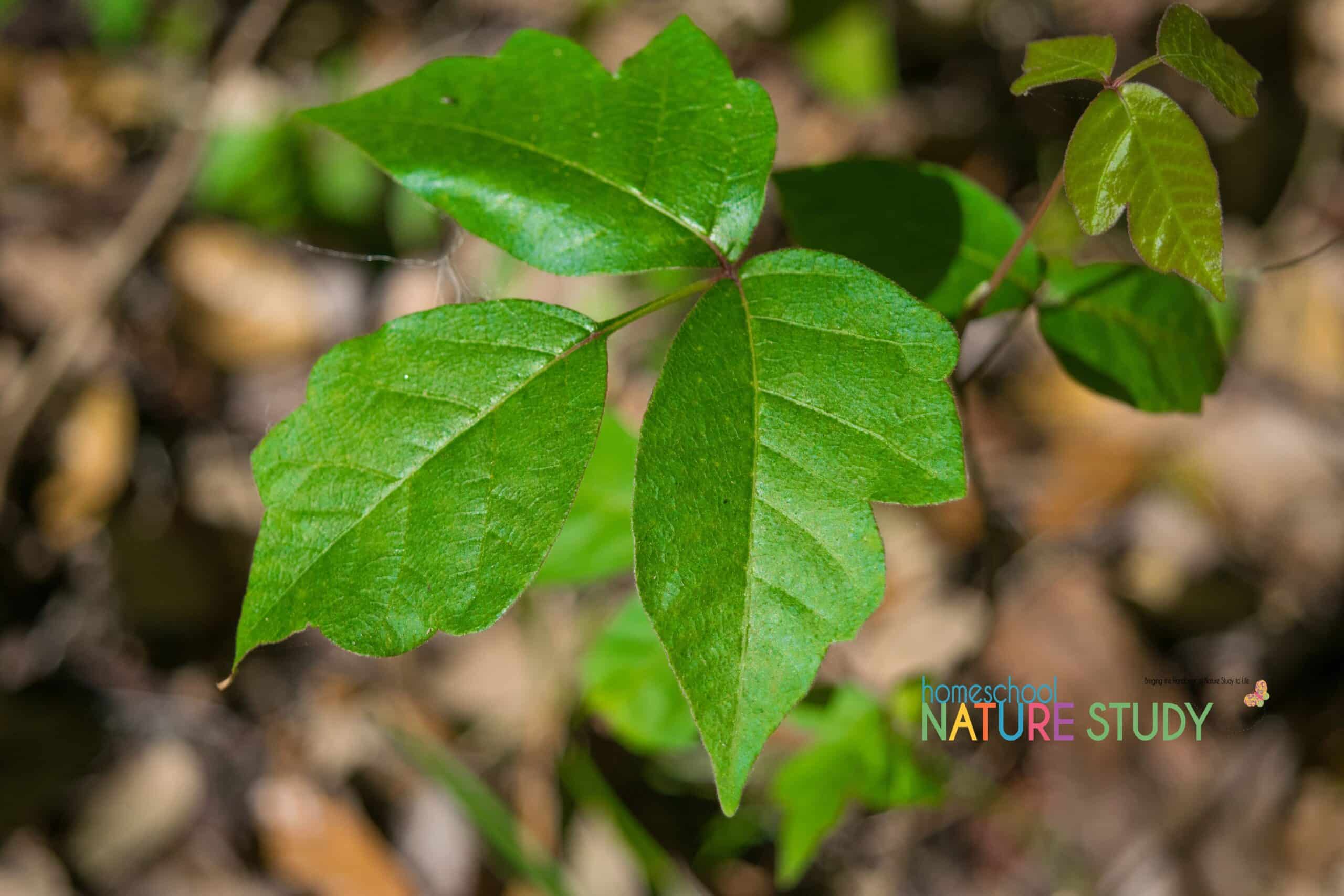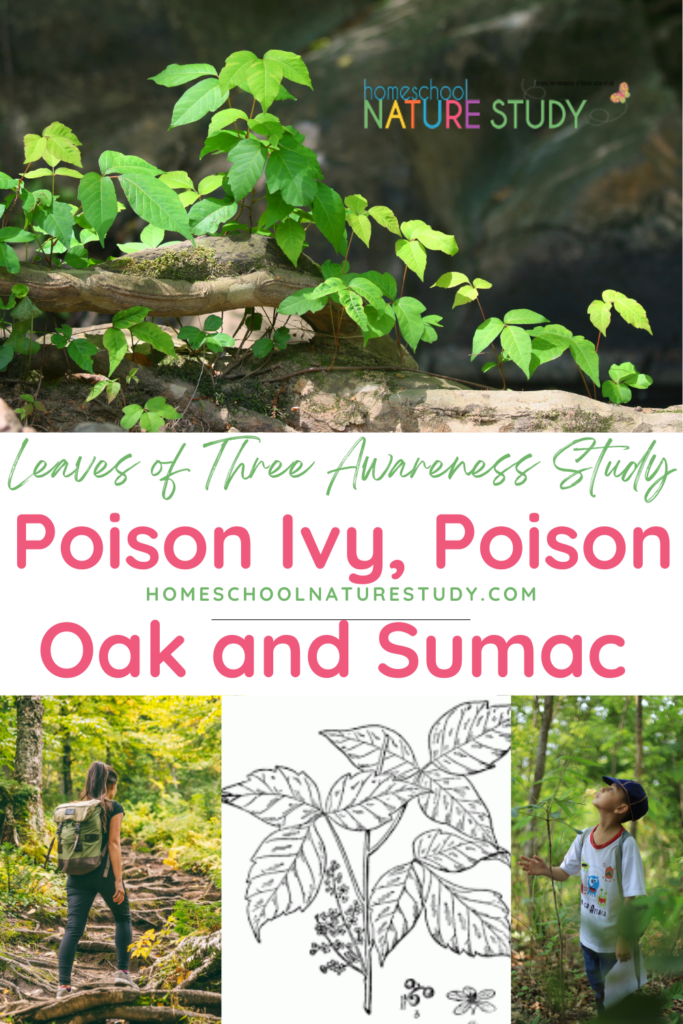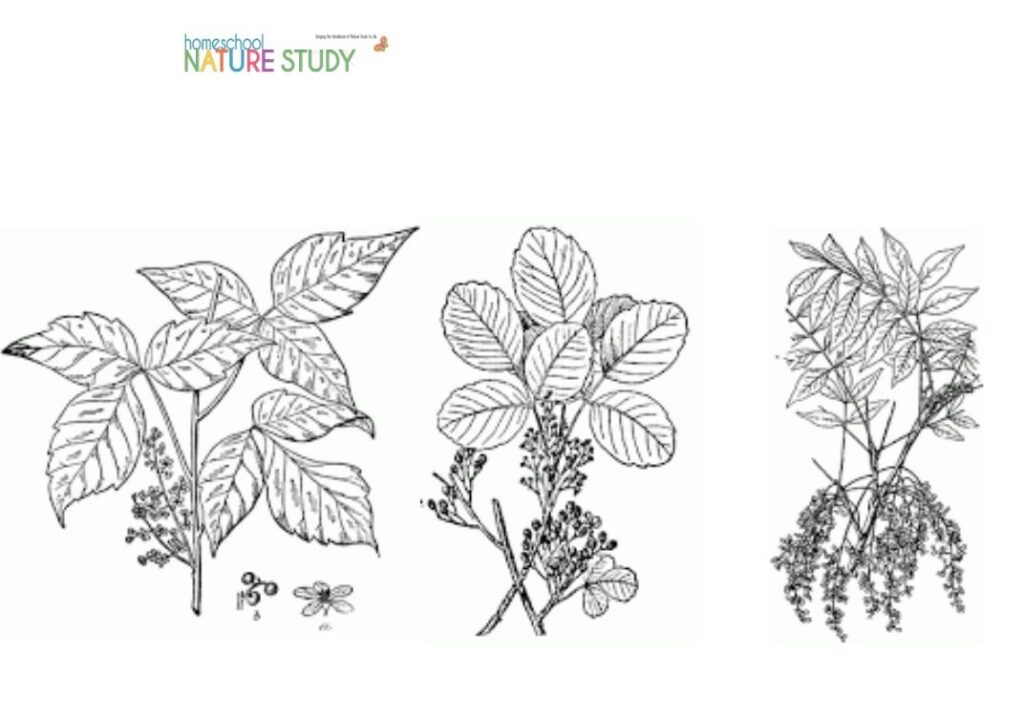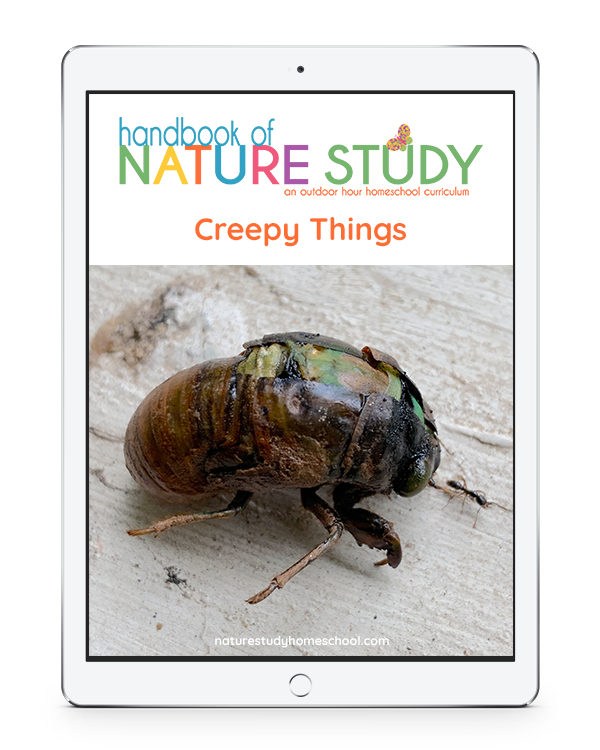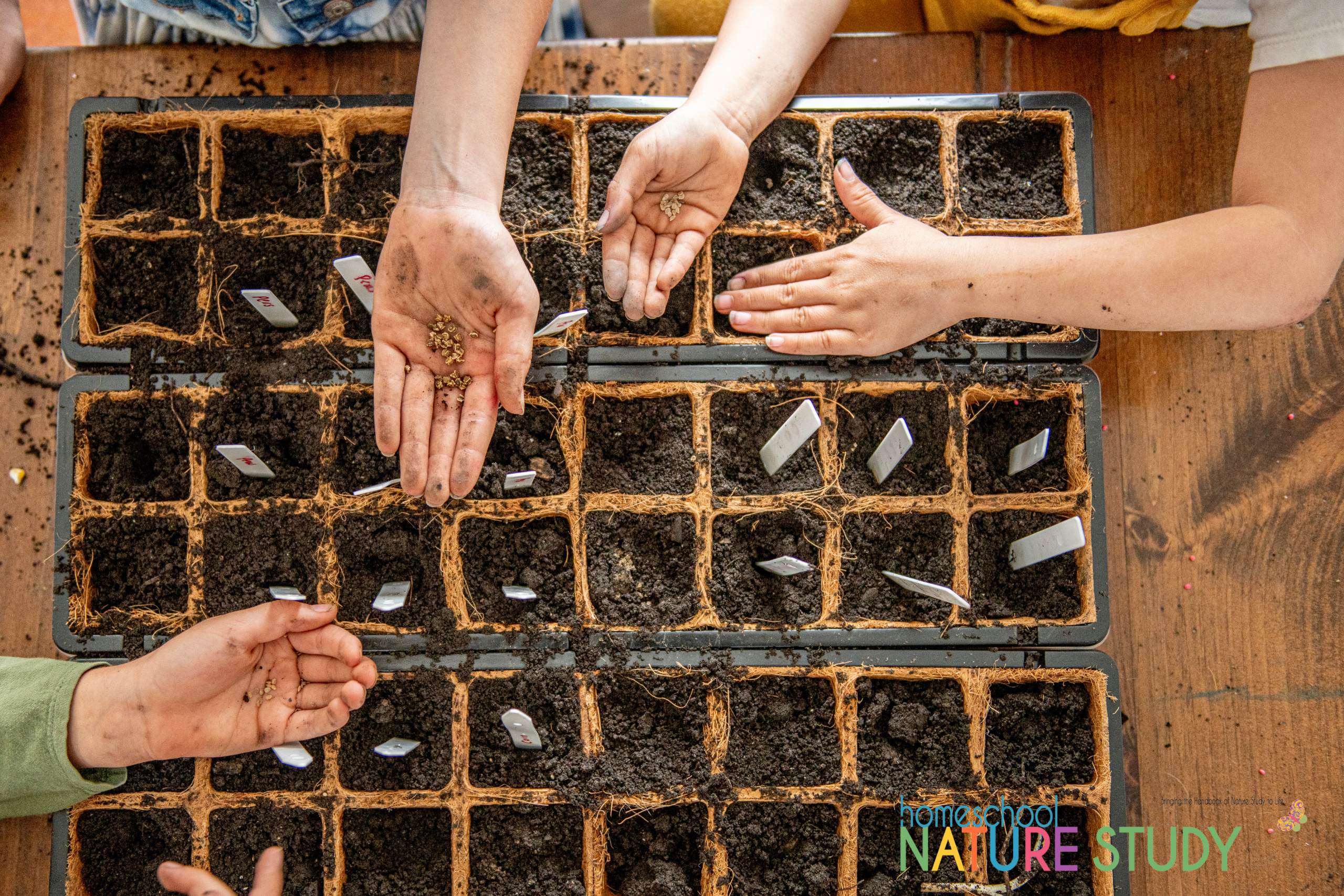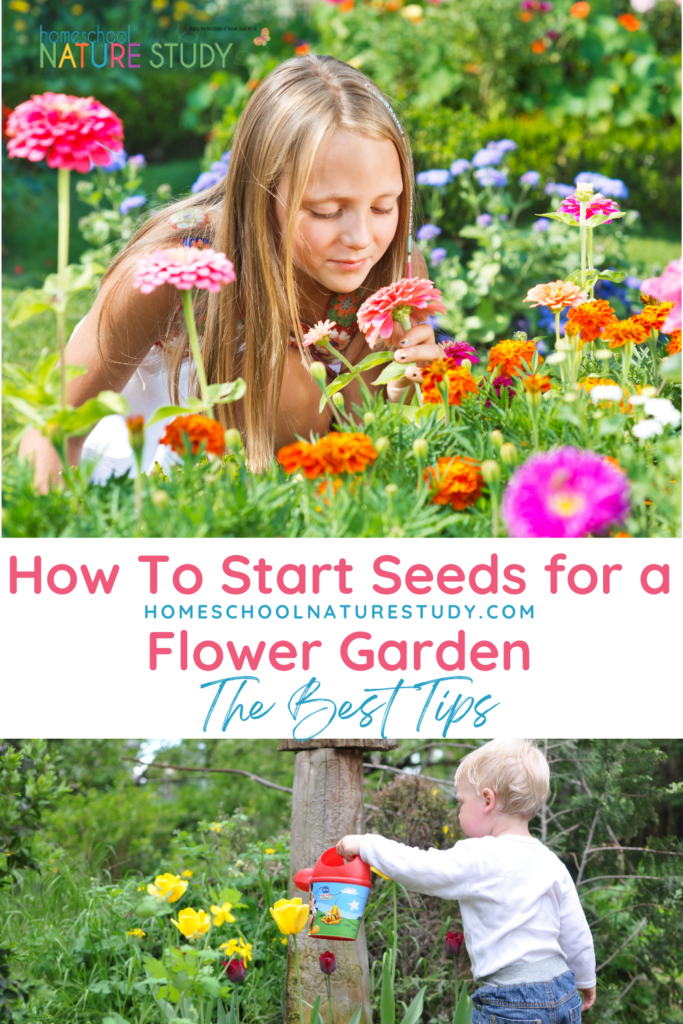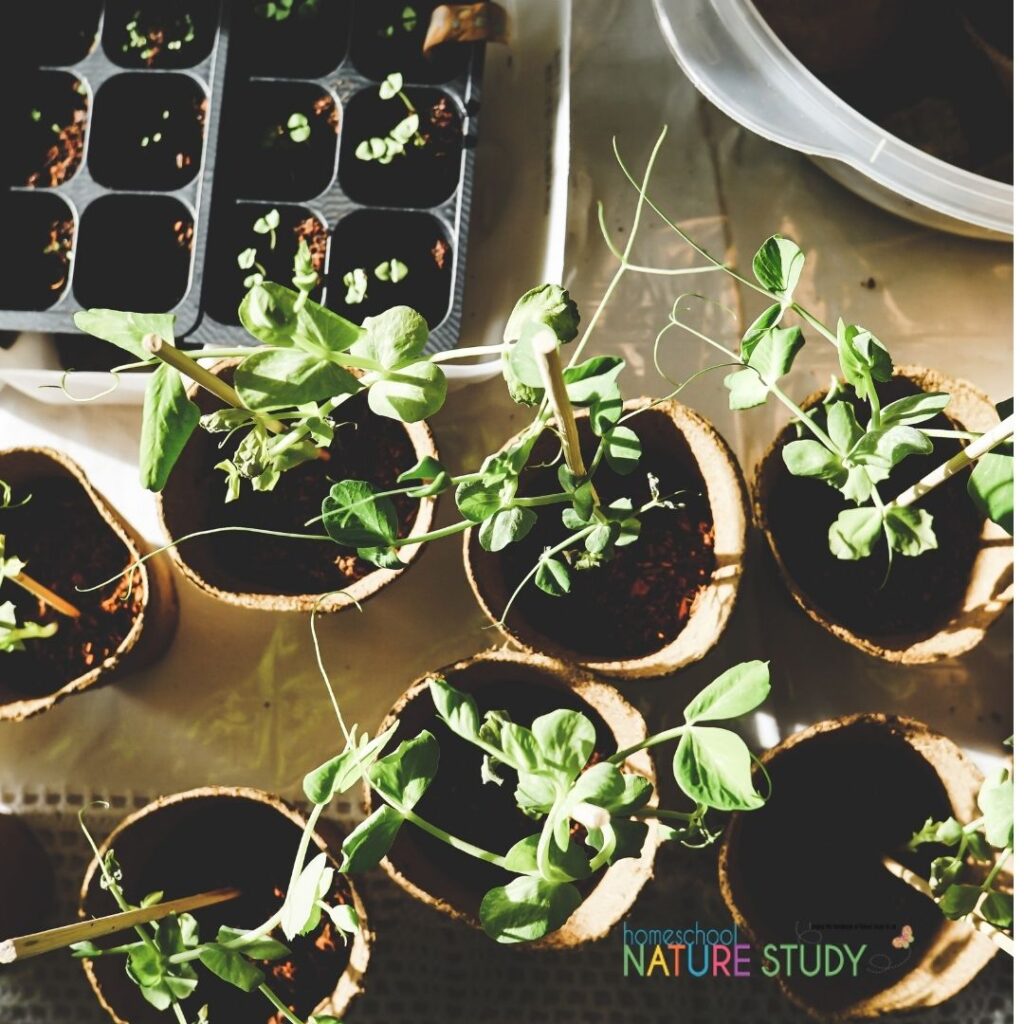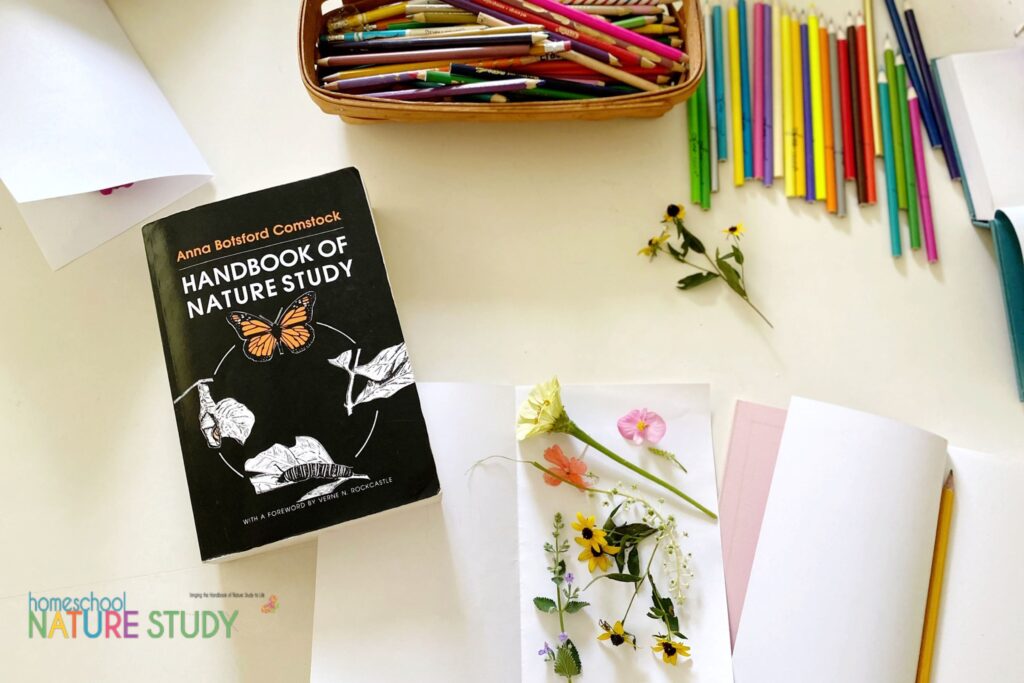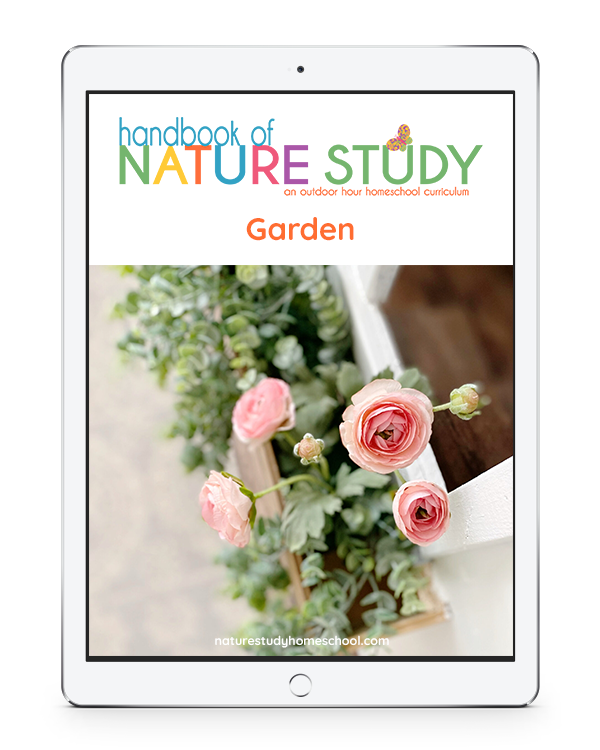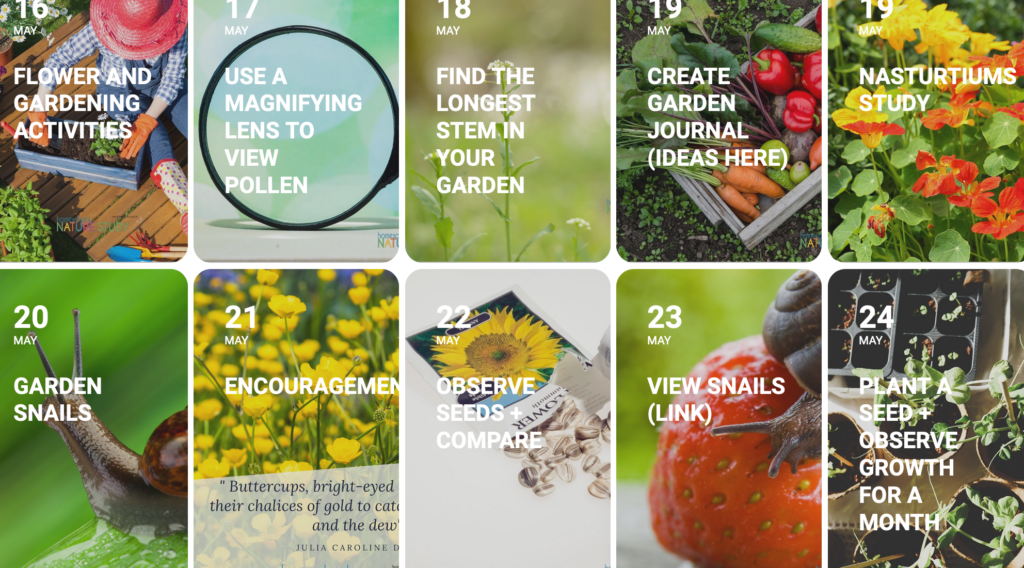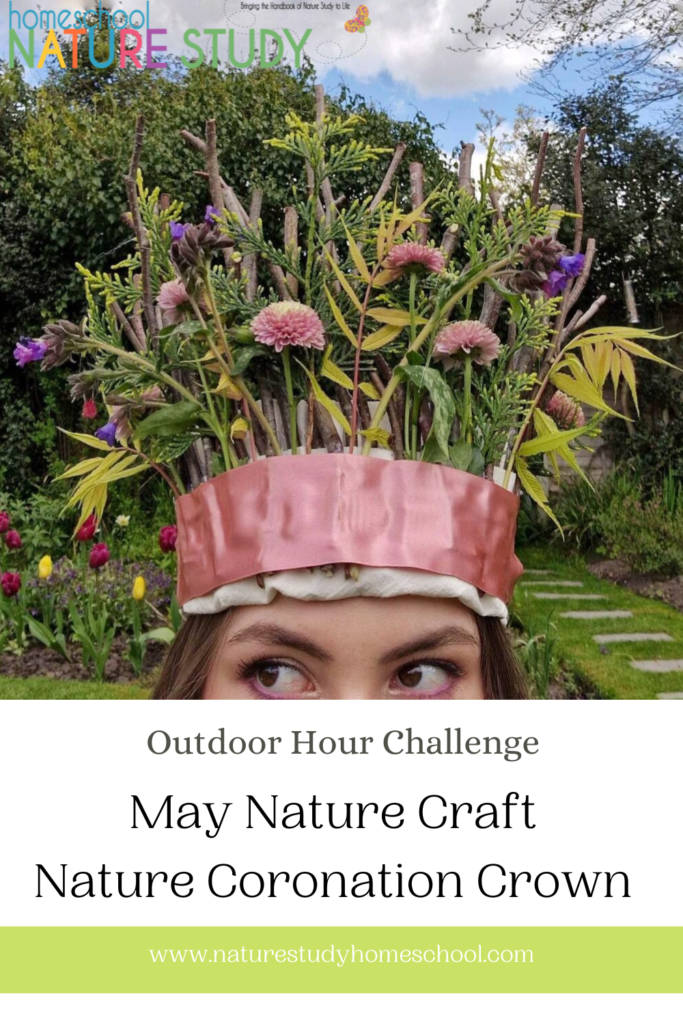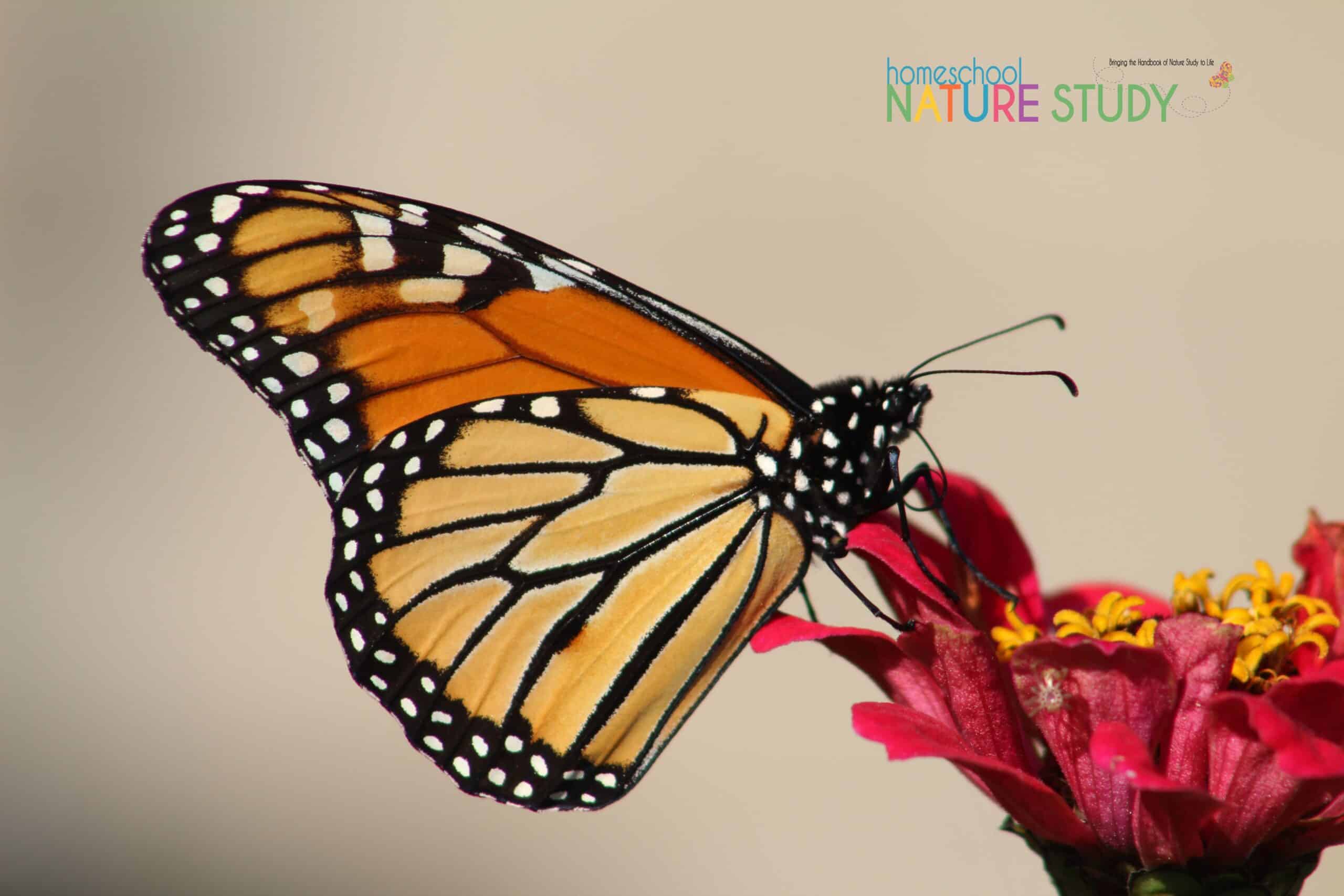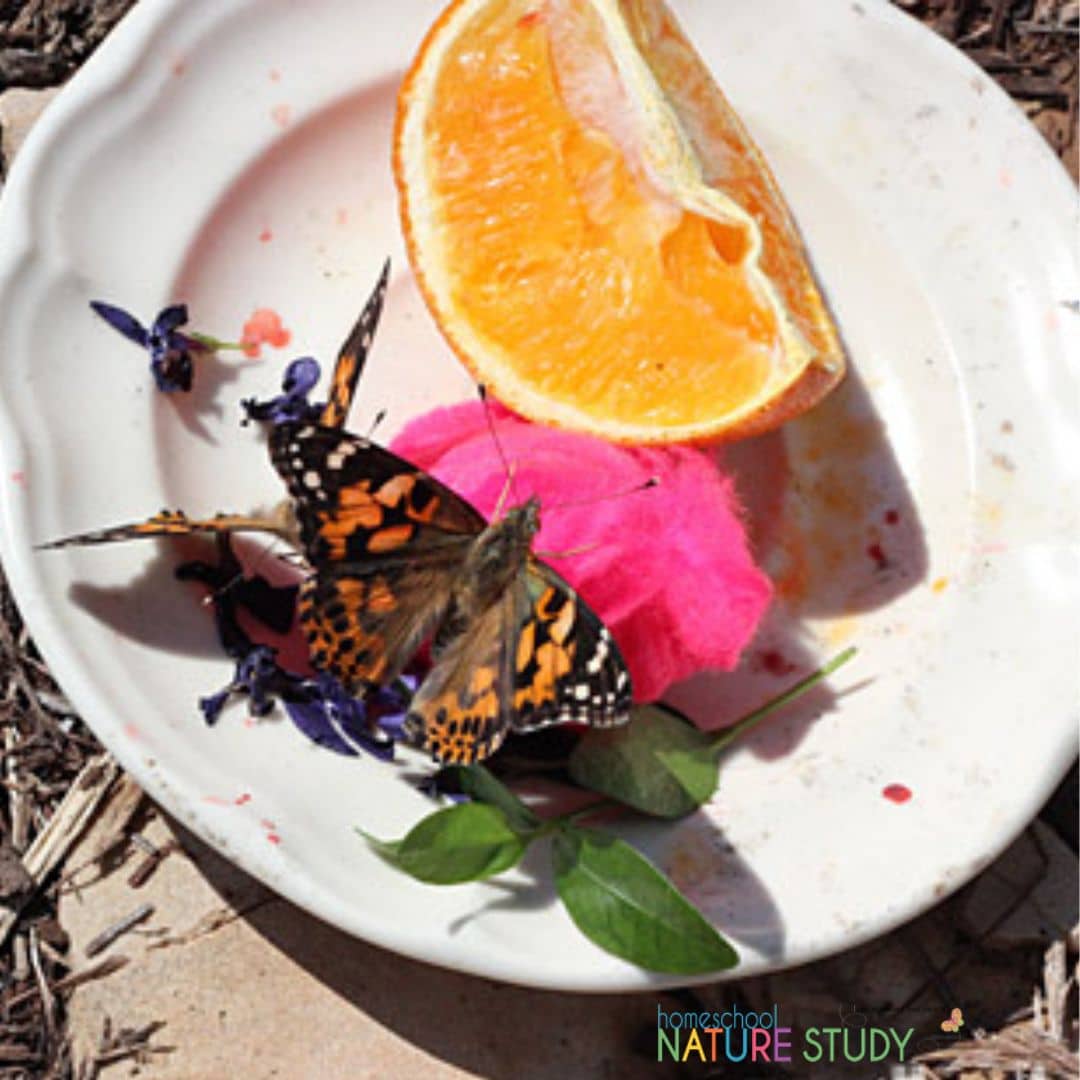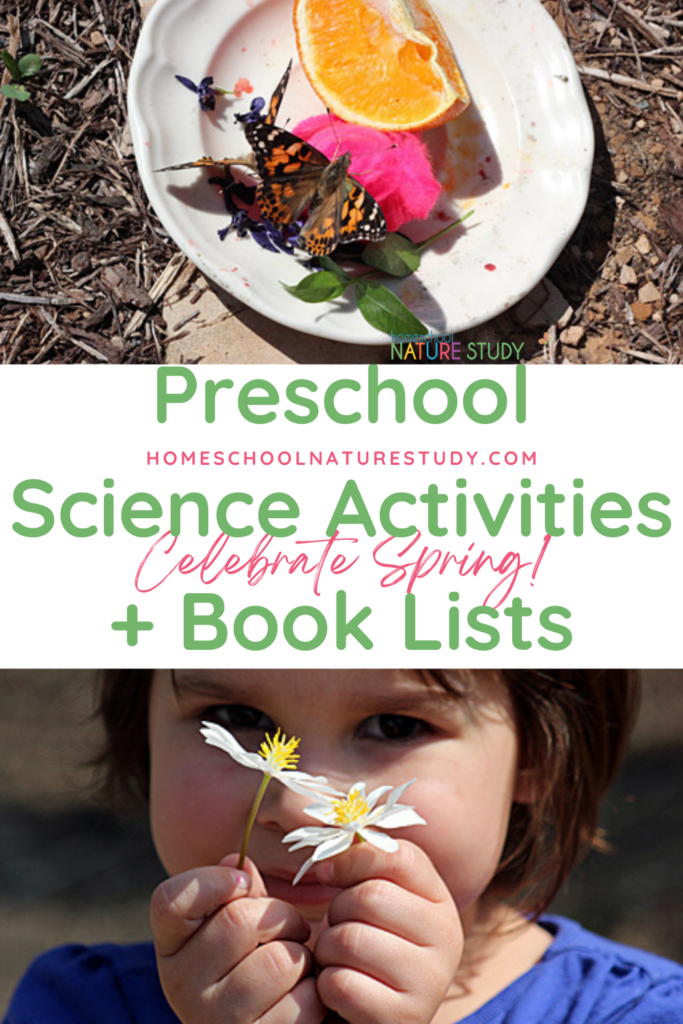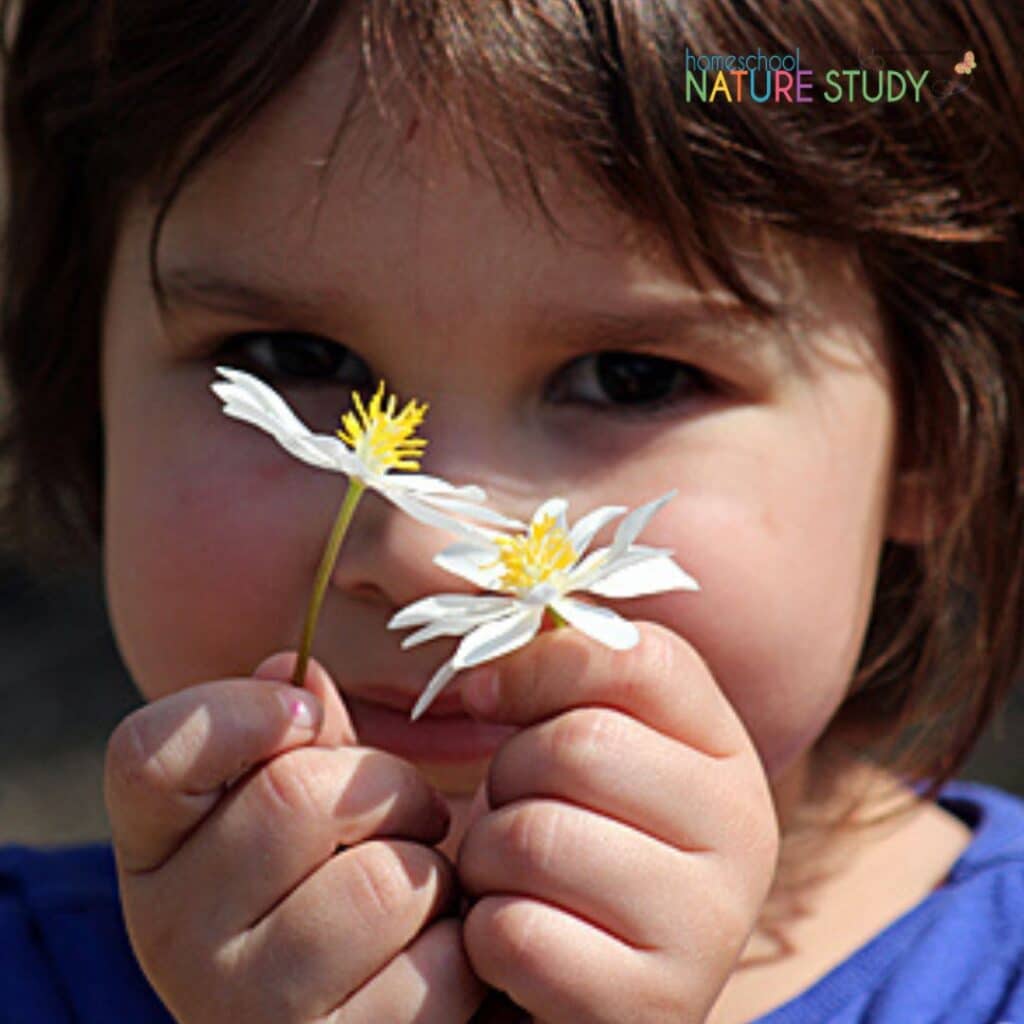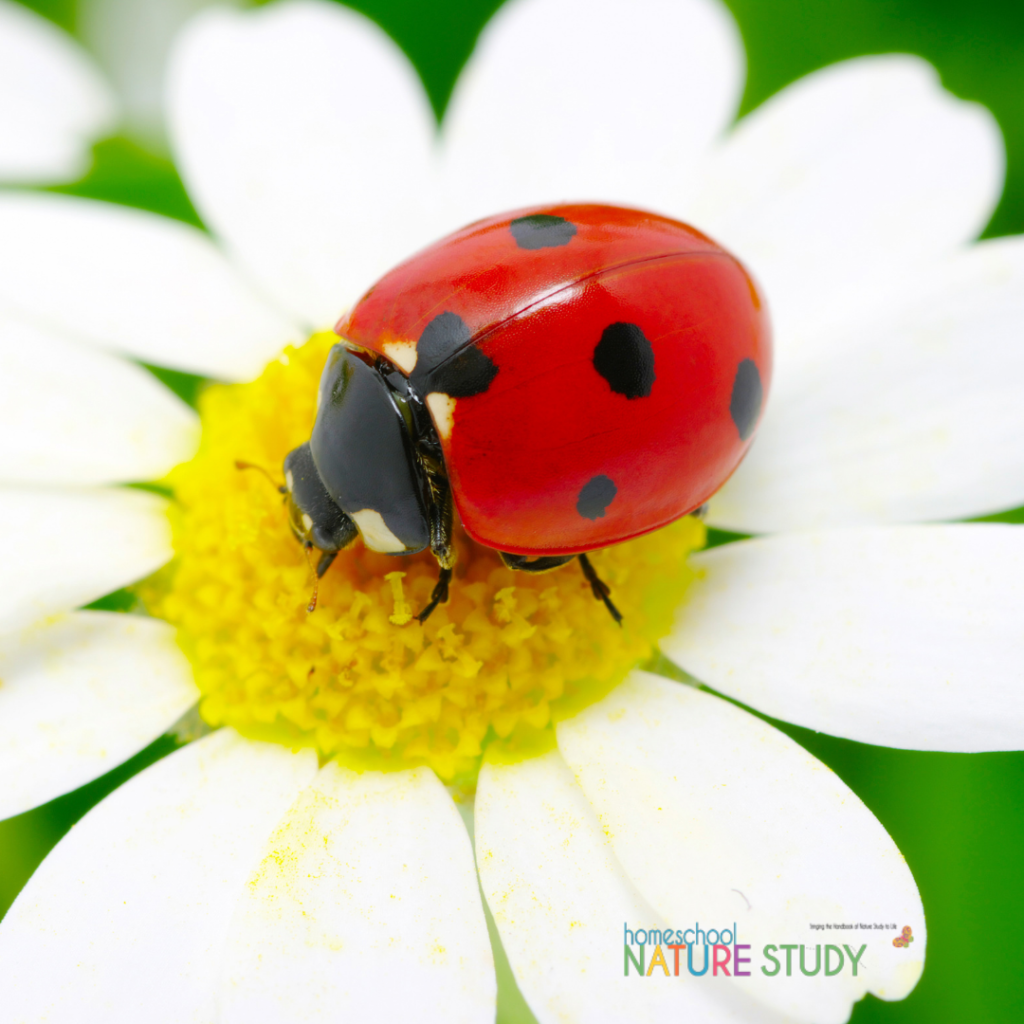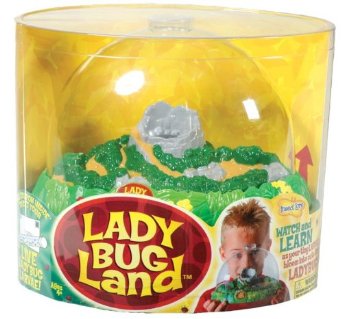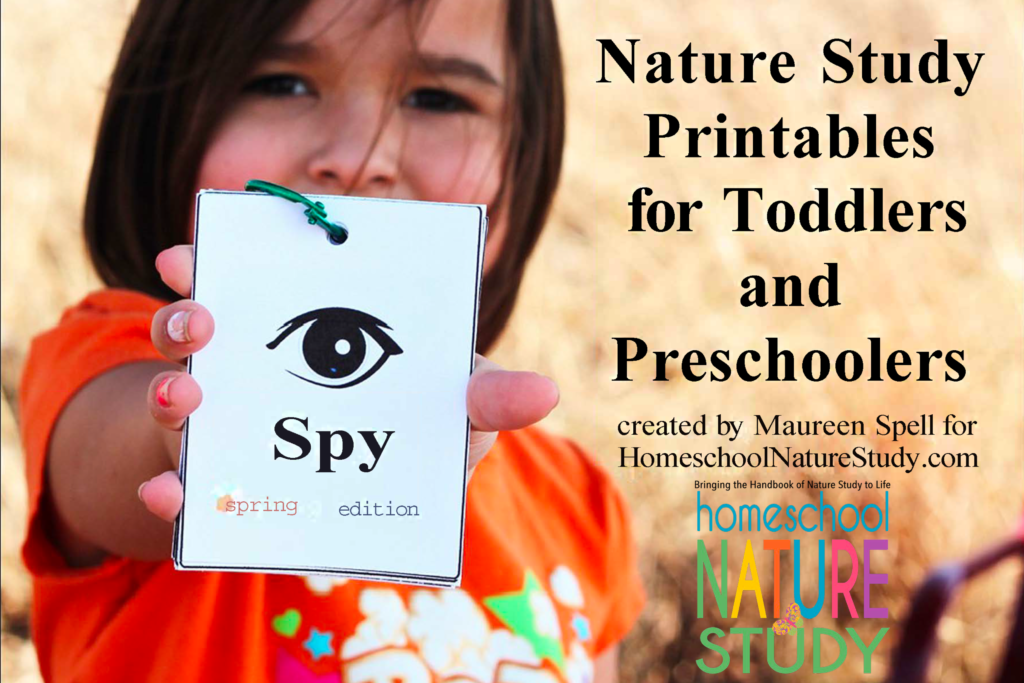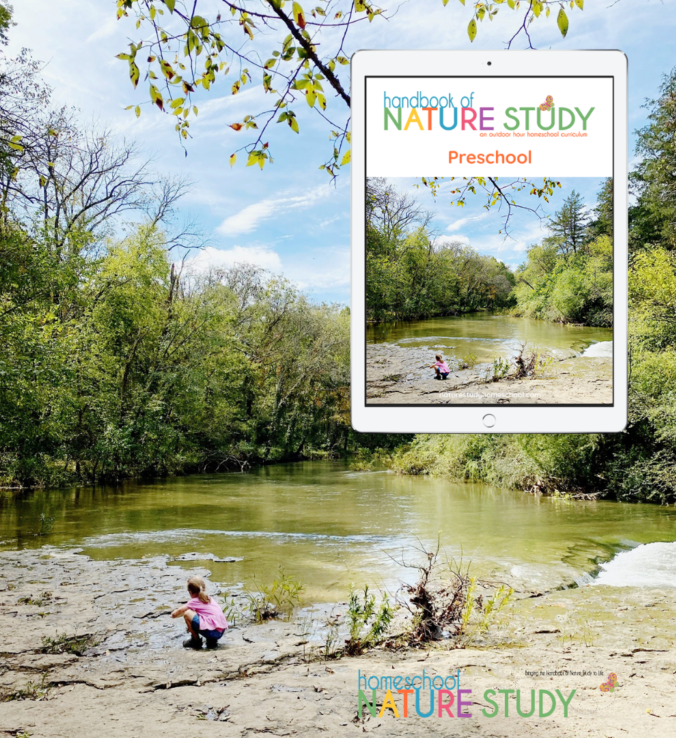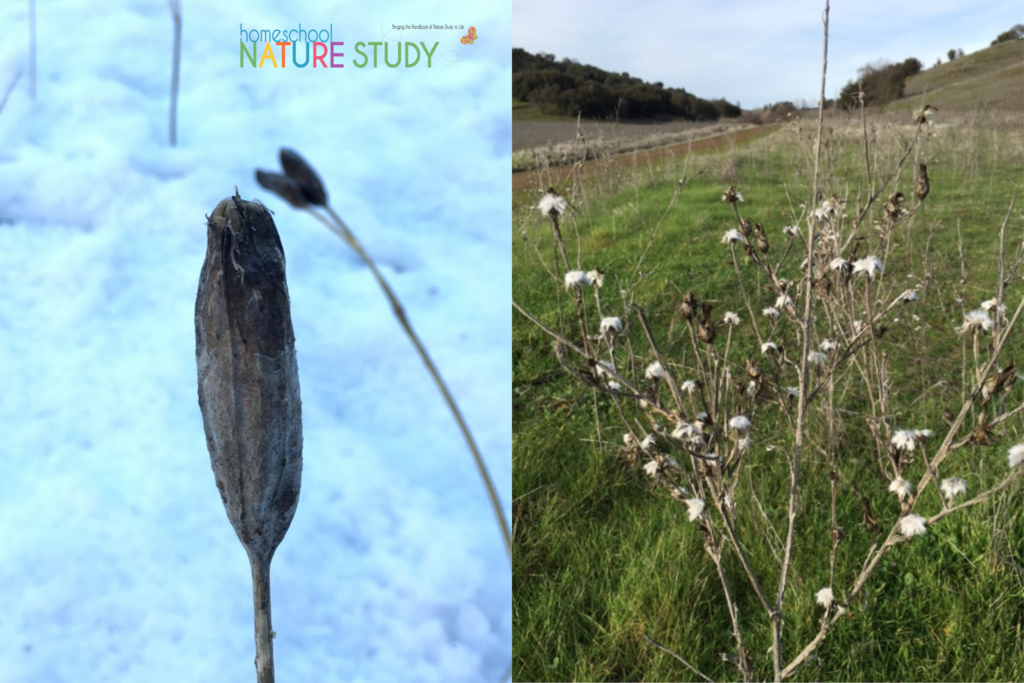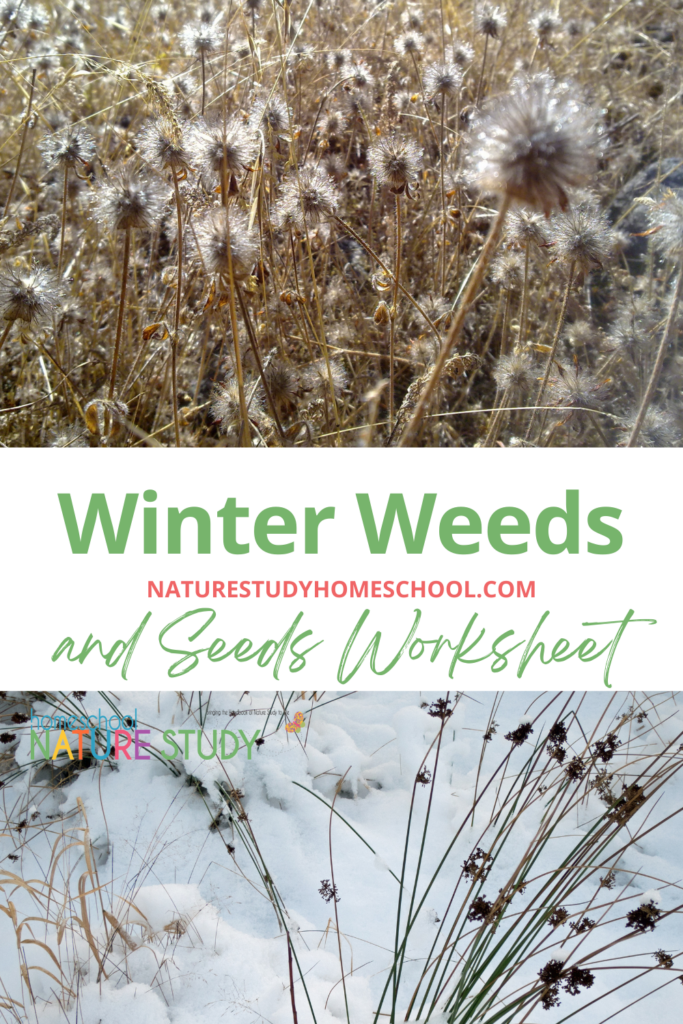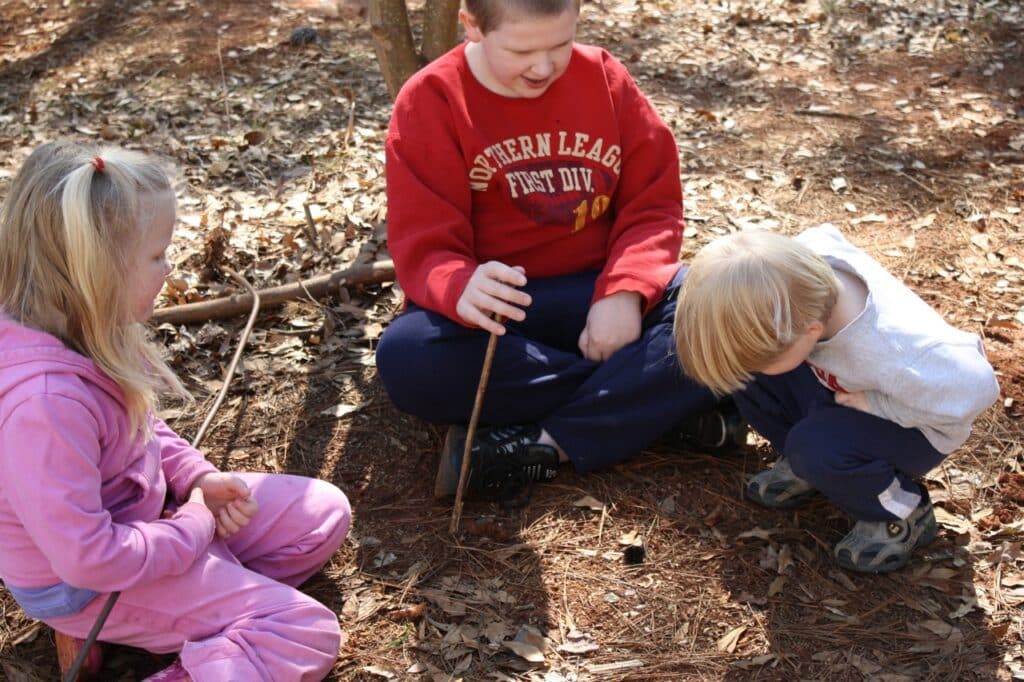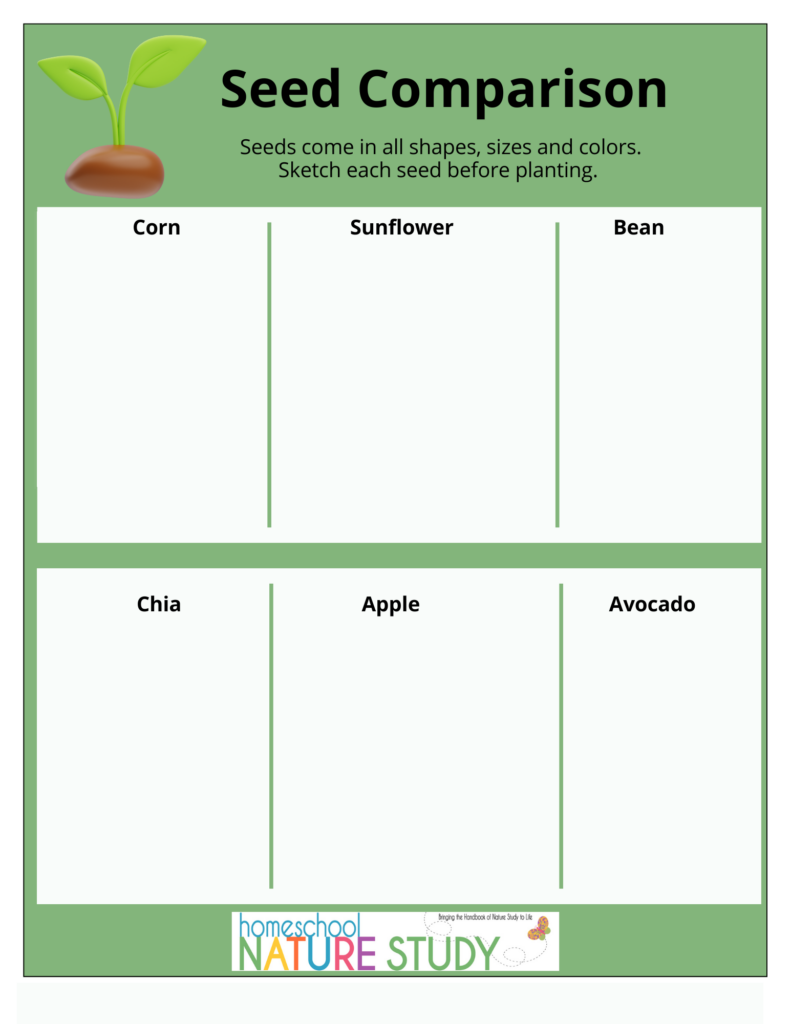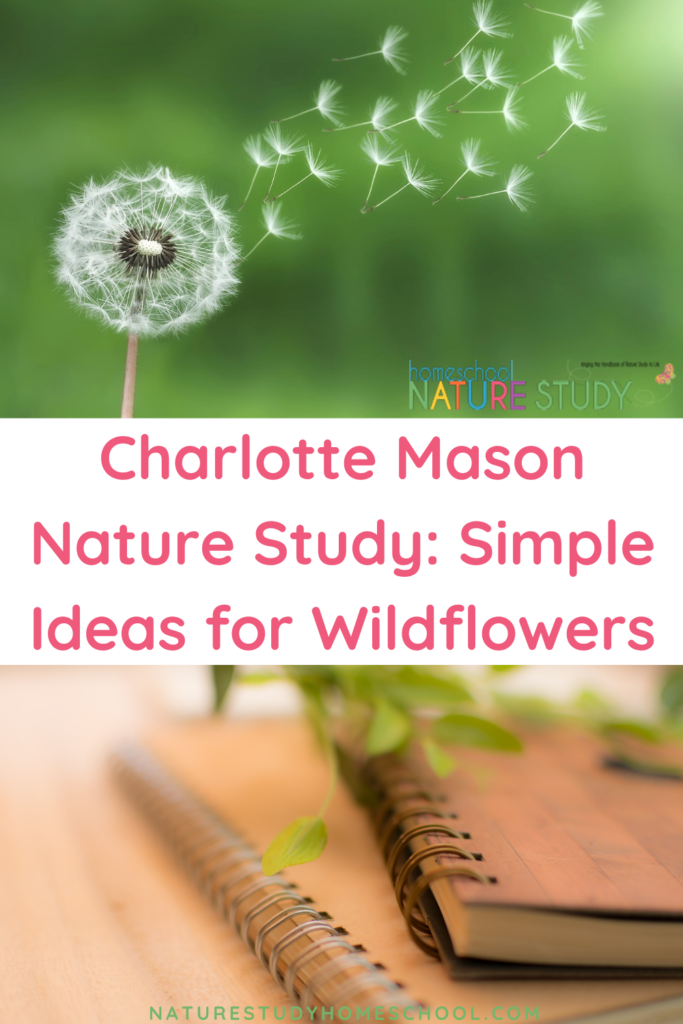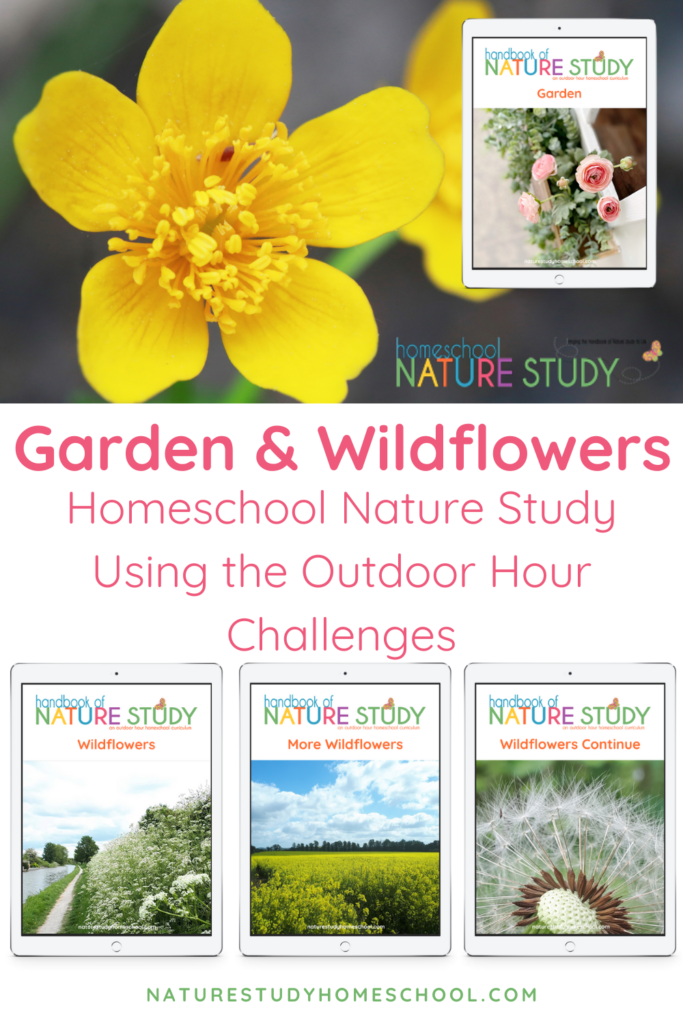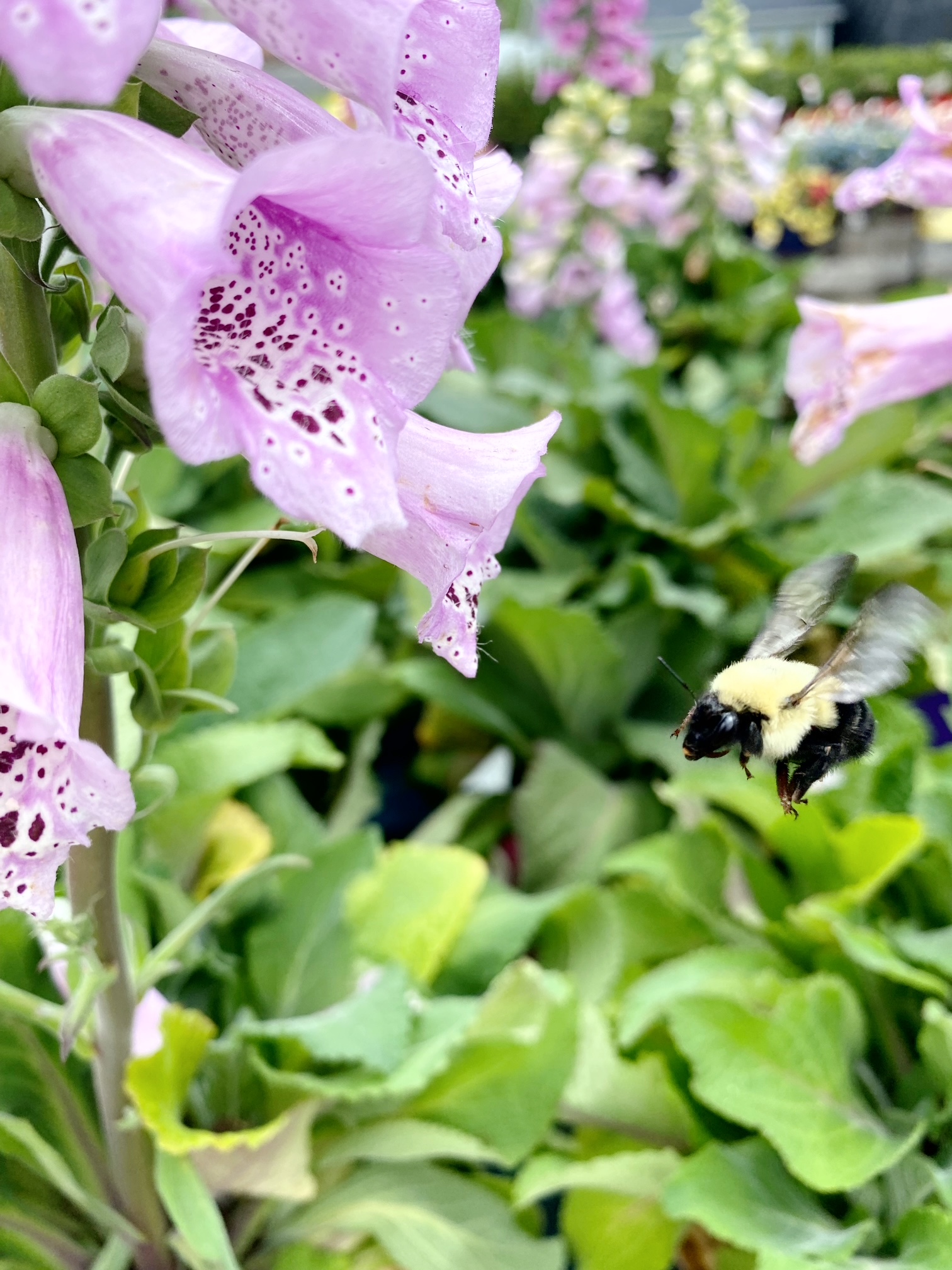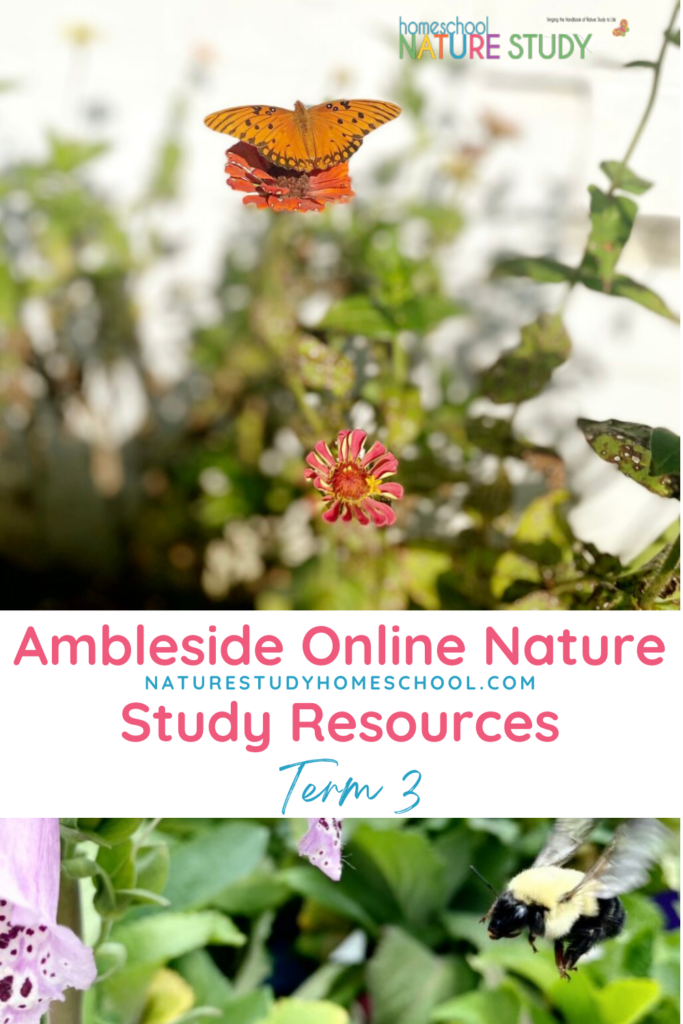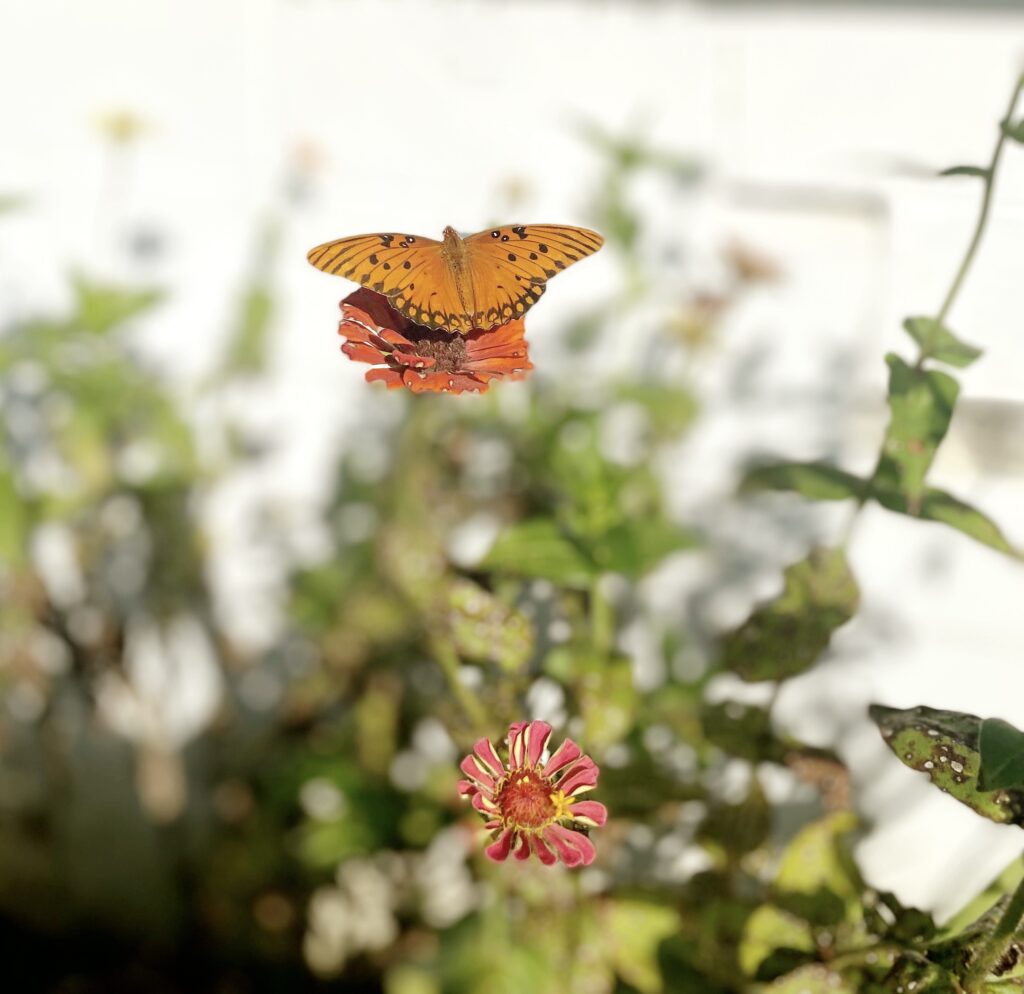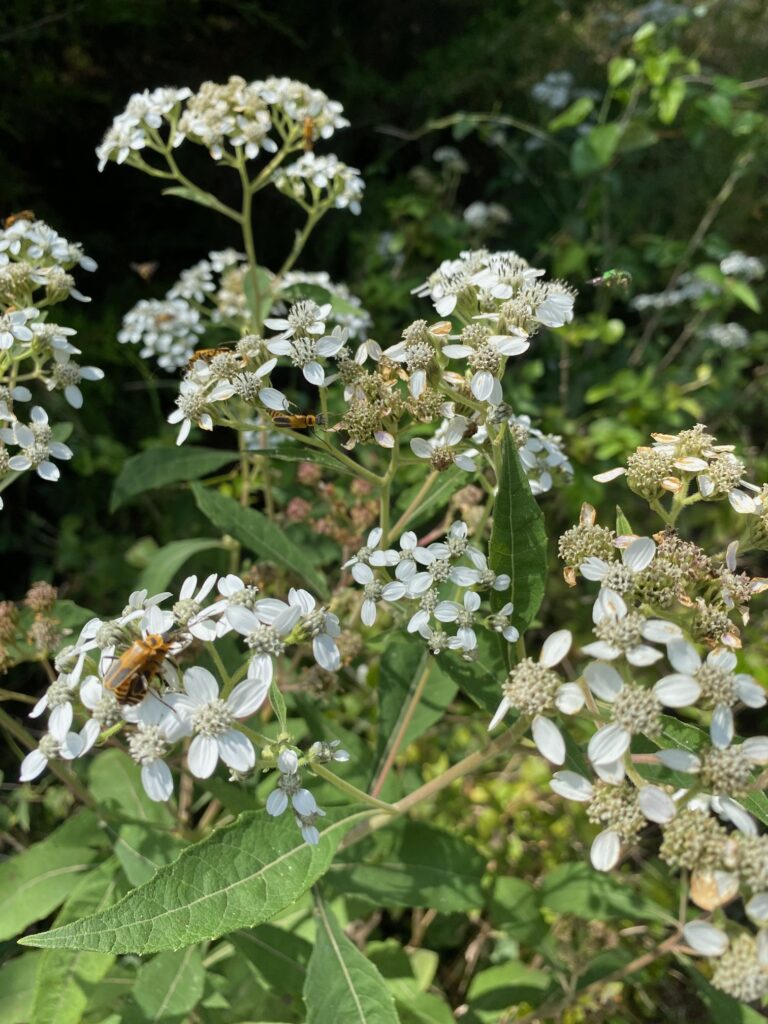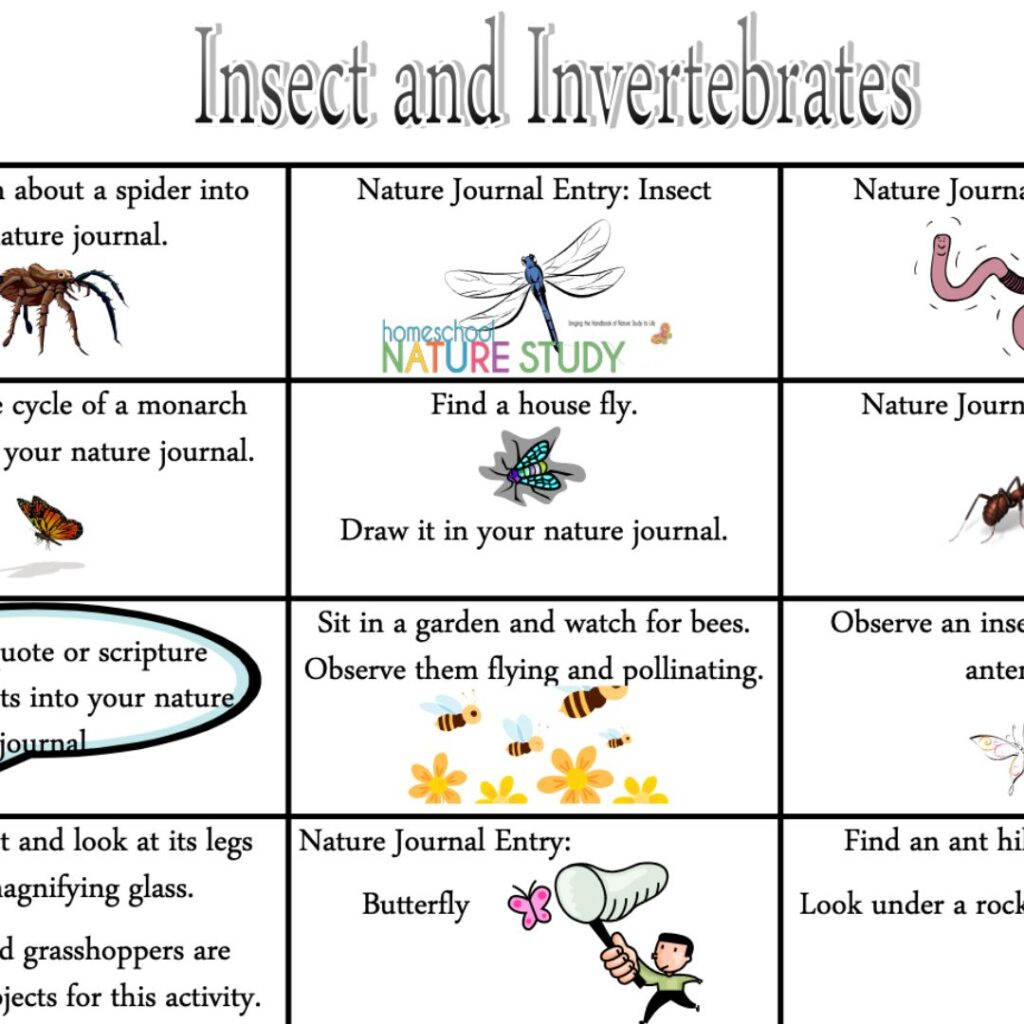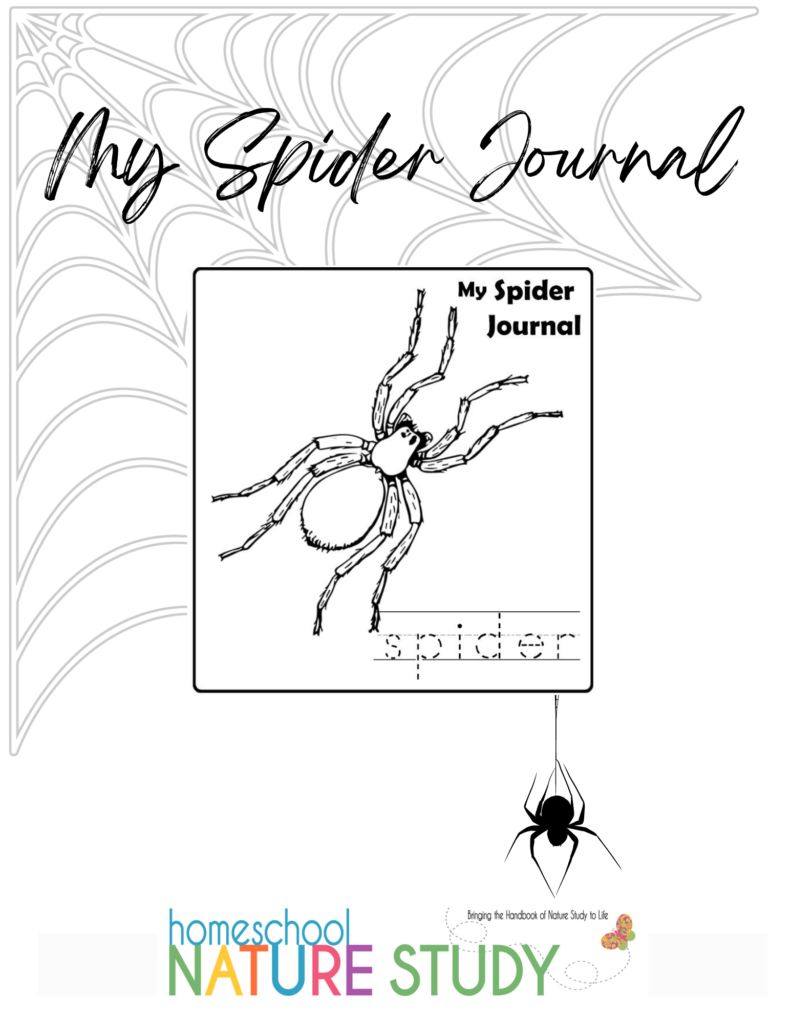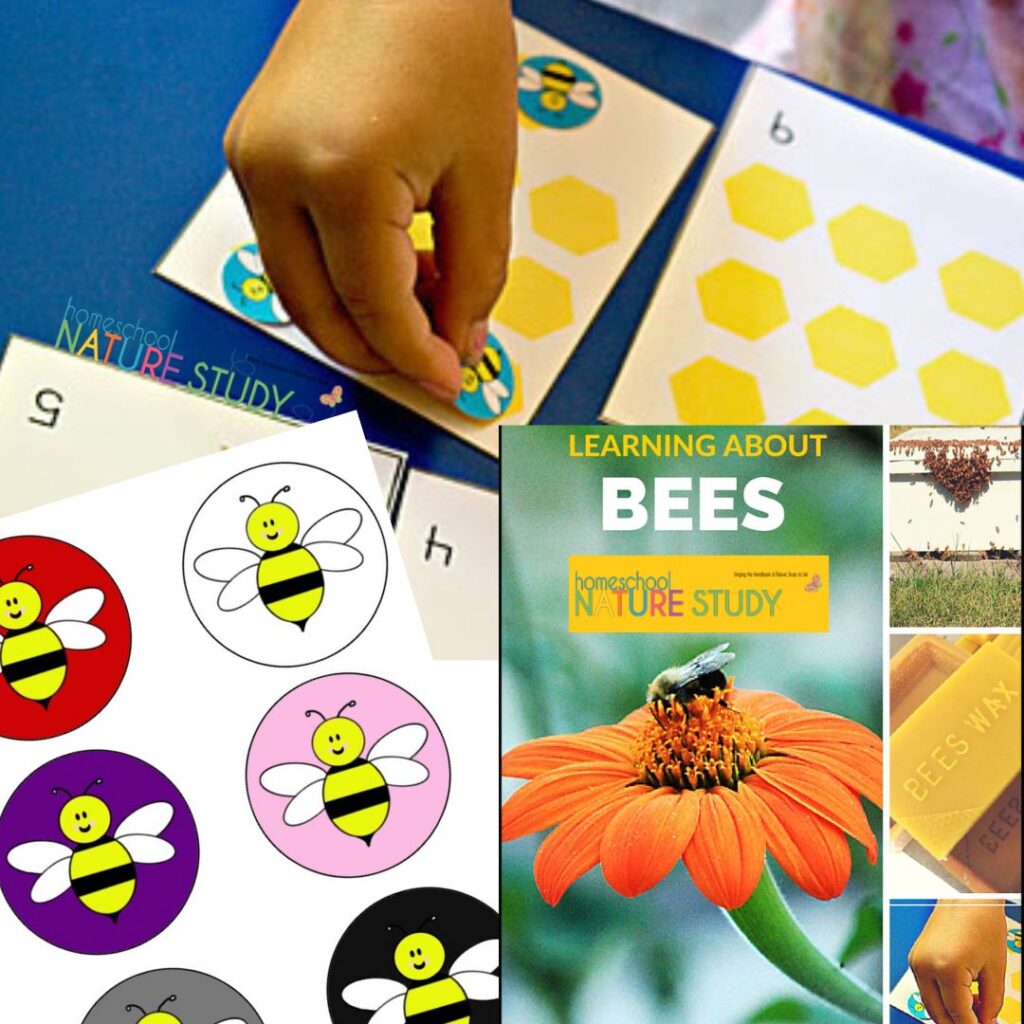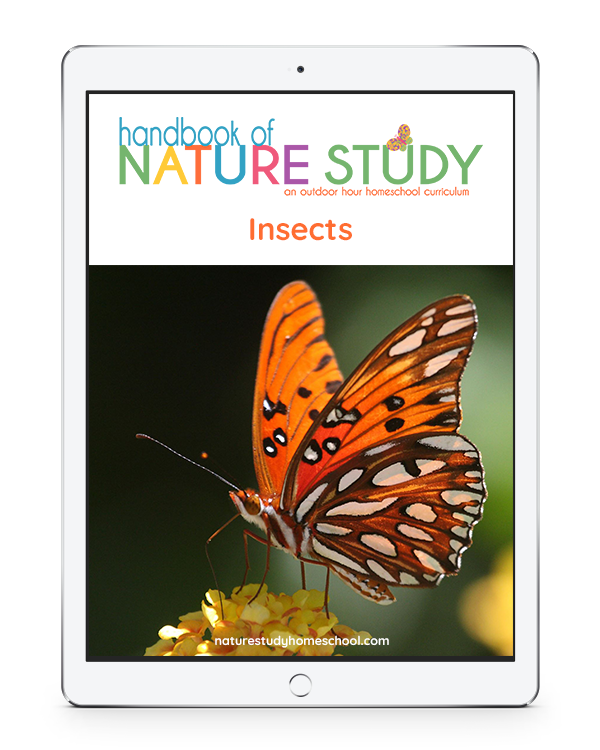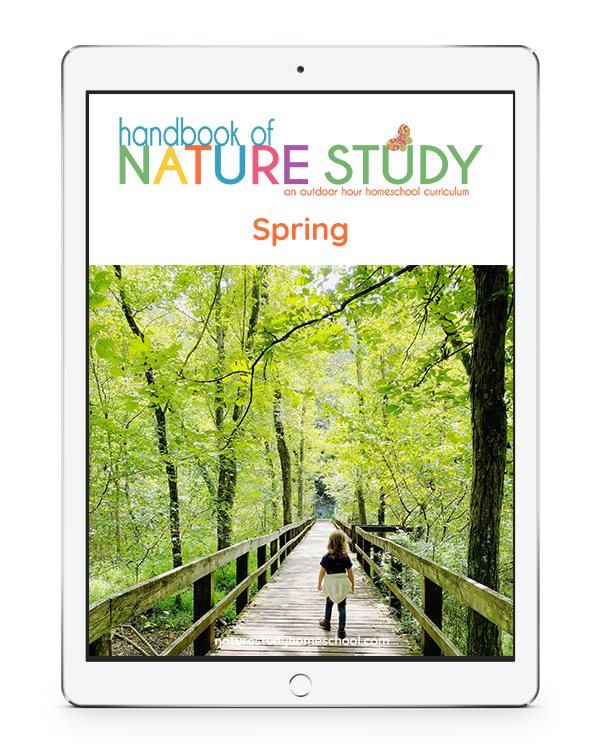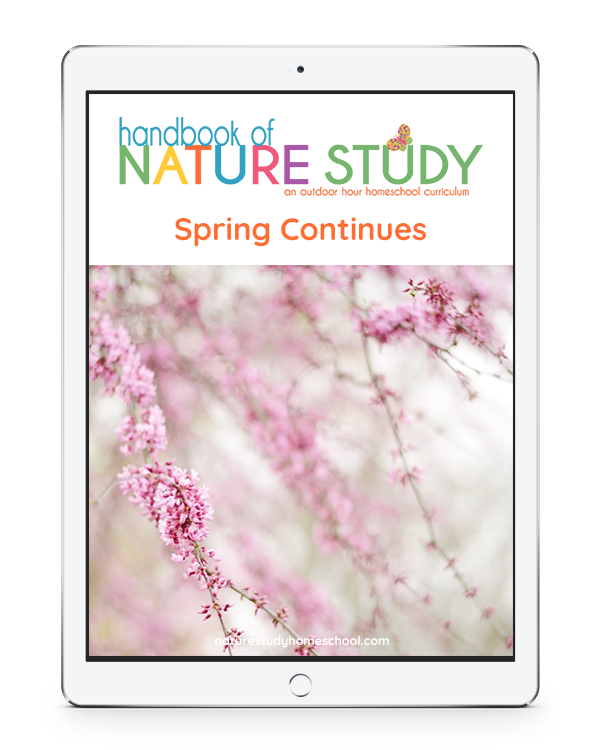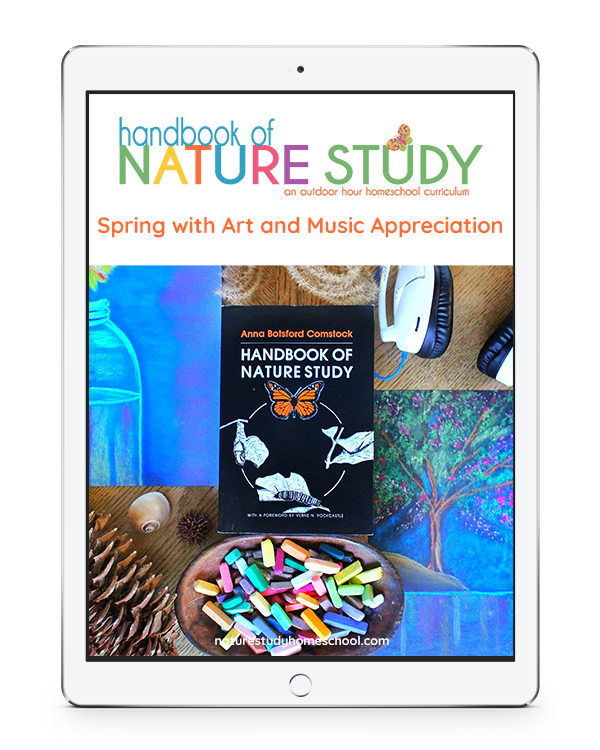Take advantage of August and enjoy summer nature walks with these ideas! Taking nature walks can be as simple as putting on your shoes and heading out the door, letting nature inspire what you do and what you study. Or, you can have a few ideas in mind before you head out the door.

August Summer Walk Ideas and Nature Study Activities
Simply take a nature walk at a nearby meadow or stream. Pick a theme for the walk such as insects, birds, trees, flowers, etc. Then have everyone make observations within that theme.
In my experience, having a focus during a walk makes it much more enjoyable for everyone. Each person can use their eyes and senses to look for items within the theme and then share them with the group.
One person can be the designated photographer and take photos of things of interest. Or, take along your nature journal and make a record of your sightings as you go along.
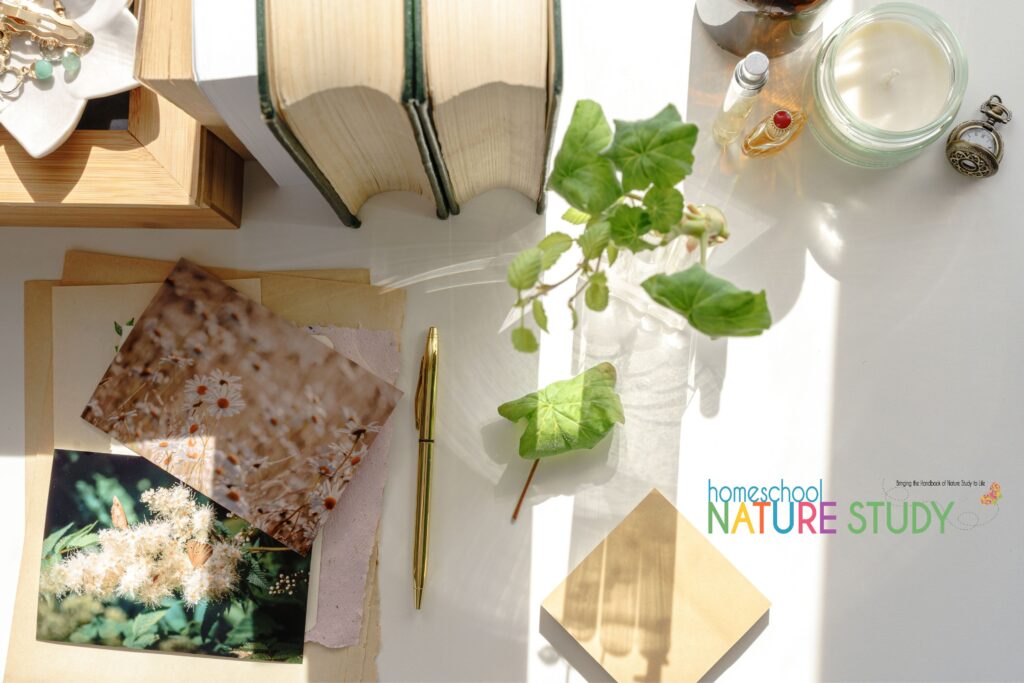
Late Summer Nature Study Ideas
I realized over time that we didn’t need to travel far to find places to go on short notice or even for a half day’s hike. I loved being able to roll out of bed, decide to go on a hike, and be out the door in a short period of time. So, how did I overcome the dilemma of finding places to hike near our home? Read More about Finding Hikes Near Home
Taking a Nature Walk – The idea of taking a nature walk is nothing new. However, the need for nature walks has never been more evident in our increasingly indoor, sedentary lives. Childhood used to be times of exploring outdoors for hours at a time, but in today’s world few children have the circumstances or incentive to get outside on their own. This is where involved parents can be of such value.
“Time in nature is not leisure time; it’s an essential investment in our children’s health (and also, by the way, in our own).”
― Richard Louv, Last Child in the Woods: Saving Our Children from Nature-Deficit Disorder
Using the Handbook of Nature Study in Your Homeschool
Need help getting started? Enjoy Amy’s Six Tips for Using The Handbook of Nature Study! (also in the caption of the video, above)
Be sure to fit in some sweet, nighttime summer nature studies. Find an Ultimate Guide to Nighttime Summer Nature Studies HERE.
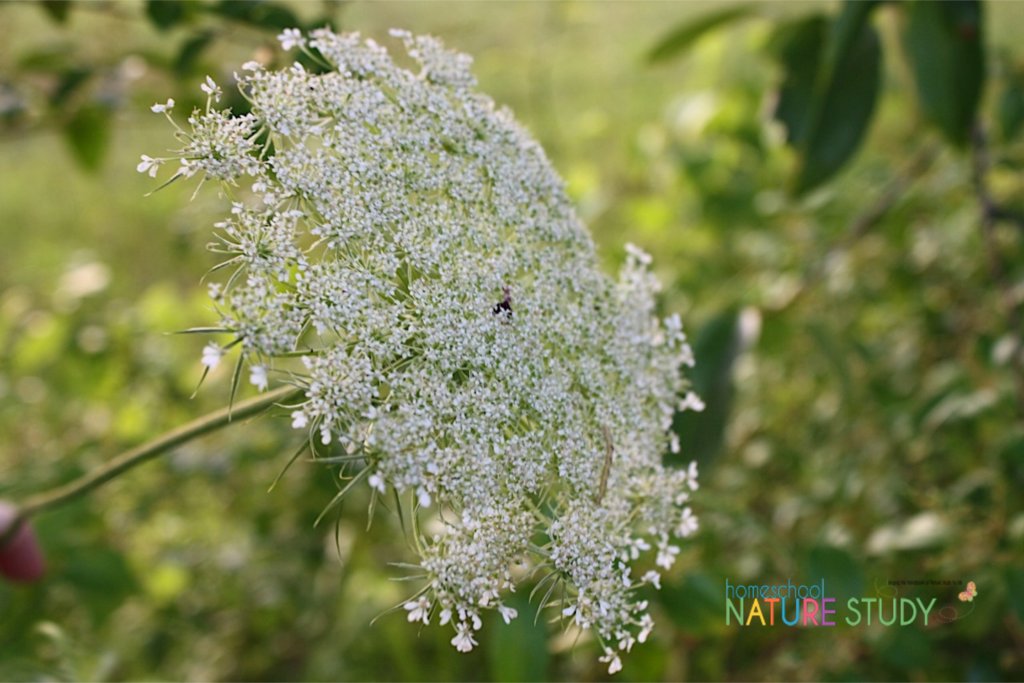
August Nature Study Plans with the Outdoor Hour Challenges
Each year we have a new focus with The Handbook of Nature Study curriculum plans. Here is a sampling of topics from this year and others:
- Queen Anne’s lace
- Crickets/Grasshoppers
- Evening Primrose
- Raccoons/skunks
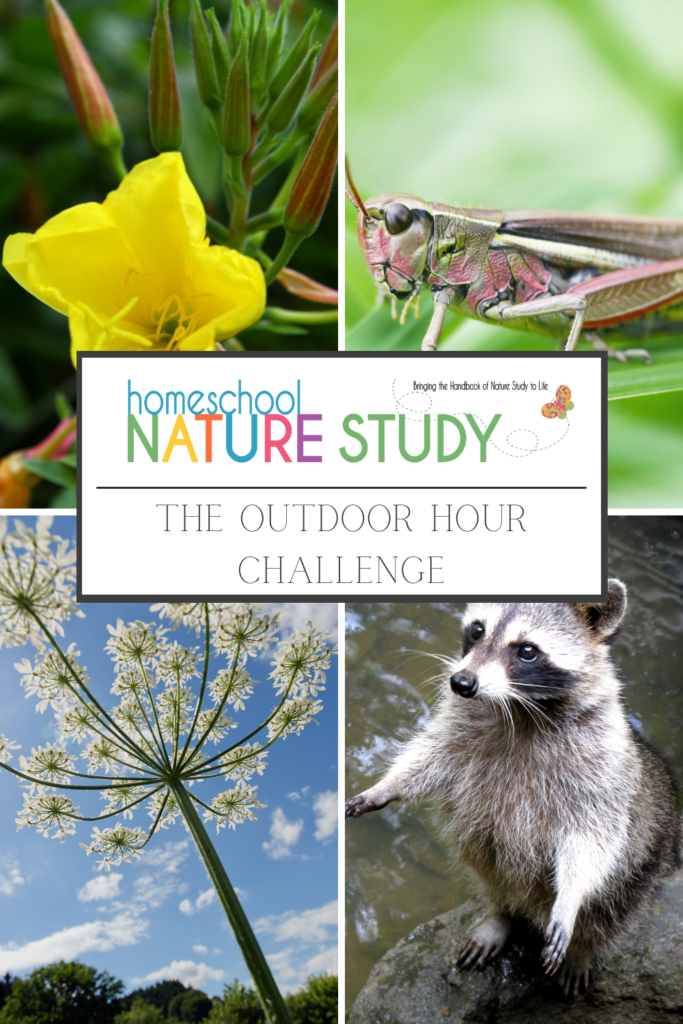
- Pressing flowers
- Drawing flowers
- Learning leaf parts
- Looking for pollen
- Night sky
- Nature journaling
- Nature study with art and music appreciation
You can choose from these topics and any in all of our Handbook of Nature Study courses! You can follow our plan or choose topics that match your current studies. Our nature studies complement the lovely learning in your homeschool!
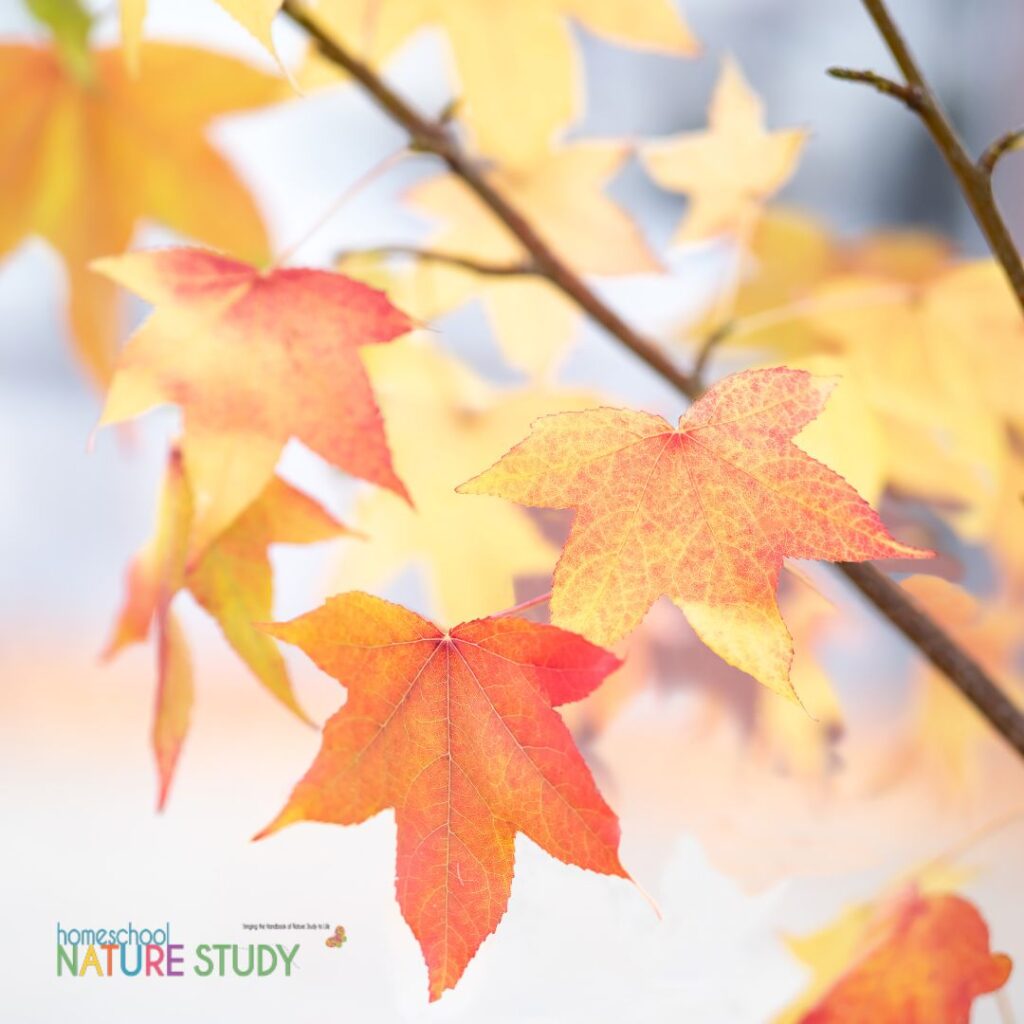
Look Ahead with Fall Homeschool Nature Study Activities
Enjoy a last days of summer homeschool nature study free notebook page. Let’s soak up these last sunny and glorious days, have fun and make memories together as a family. Get your FREE notebook page/Scavenger Hunt HERE. (Homeschool Nature Study members already have this page in your Summer Outdoor Hour Curriculum course. Not yet a member? You can download the notebook page and sample the Outdoor Hour Challenges!)
It is at this time of the year that we also look forward to autumn nature study and all the joys of nature study for your homeschool year.
The Ultimate Guide to Fall Homeschool Nature Study In Your Own Backyard – The benefits of fall nature study seem to be endless! The most important of all is making memories together as a family. The crisp, cooler air and the brilliant blue sky (on sunny days) highlight all of the fall leaf color for us. Being outside does wonders for moods. And having an outdoor ‘laboratory’ for discovery is as simple as swinging open your backdoor.
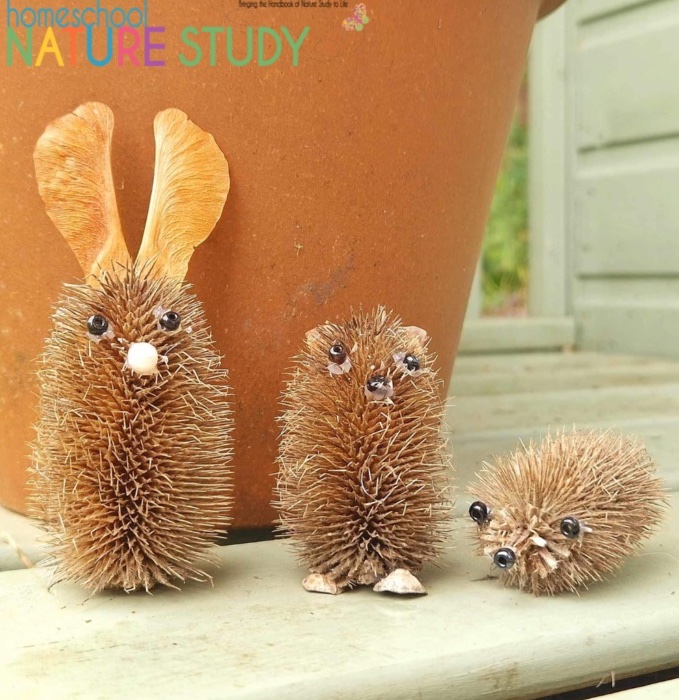
Enjoy Nature Crafts (fun teasel pets!) plus The Outdoor Mom series in Homeschool Nature Study membership!
Fall Nature Study Lesson Plans
We have Outdoor Hour Challenge Homeschool Nature Study Curriculum filled with weeks of fall nature study plans! You can also take a look at this sampling of the resources we have for you to enjoy simple, fall homeschool nature study in your own backyard.
- Seasonal Tree Observations Outdoor Hour Challenge
- Fall Color Walk with Printable Color Cards in membership (great for your youngest adventurers)
- How to Make Leaf Rubbings (video)
- Tips for Drawing Leaves
- Learn Why Leaves Change Color
- Advanced studies on the chemistry of leaves
- Seasonal Favorites: apples, pumpkins, bats, turkeys and more!
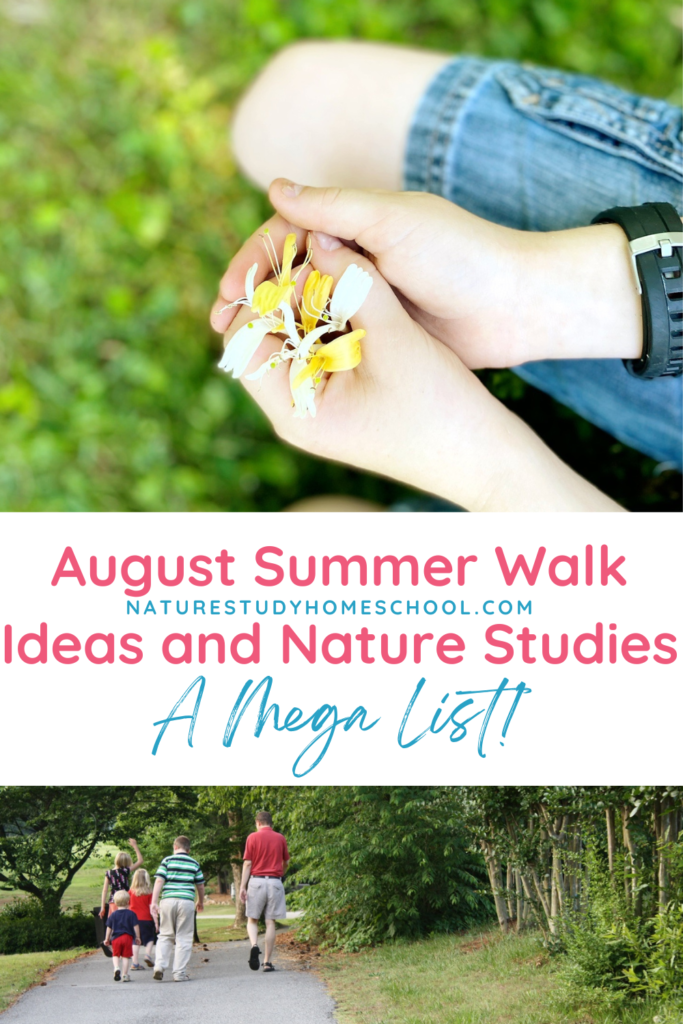
The Outdoor Hour Challenges Bring The Handbook of Nature Study to Life in Your Homeschool!
For even more homeschool nature study ideas for all seasons, join us in Homeschool Nature Study membership! You’ll receive new ideas each and every week that require little or no prep – all bringing the Handbook of Nature Study to life in your homeschool!
Be inspired. Be encouraged. Get outdoors!
Find Nature Study Activities for each month of the year!

Tricia and her family fell in love with the Handbook of Nature Study and the accompanying Outdoor Hour Challenges early in their homeschooling. The simplicity and ease of the weekly outdoor hour challenges brought joy to their homeschool and opened their eyes to the world right out their own back door! She shares the art and heart of homeschooling at You ARE an ARTiST and Your Best Homeschool plus her favorite curricula at The Curriculum Choice.

